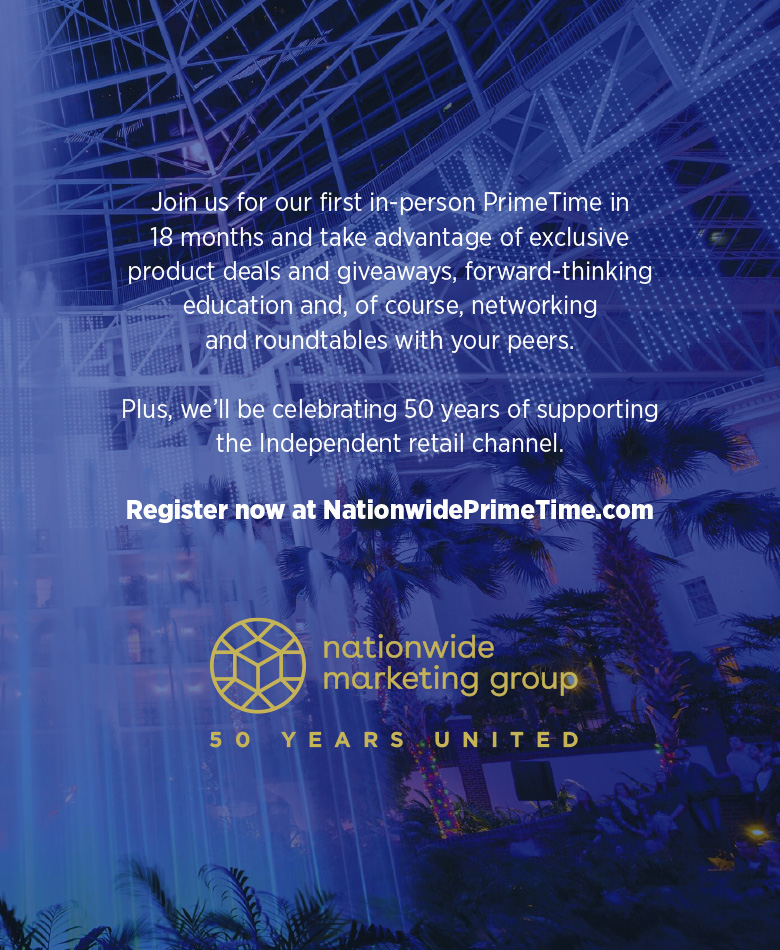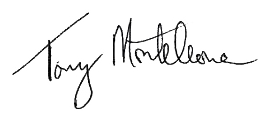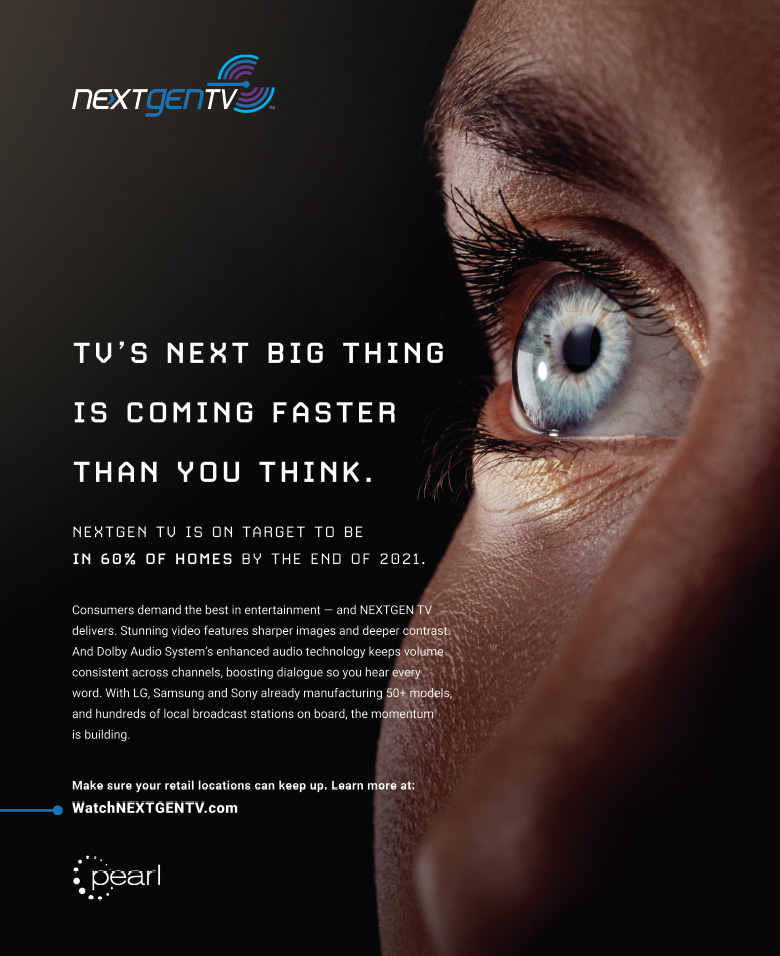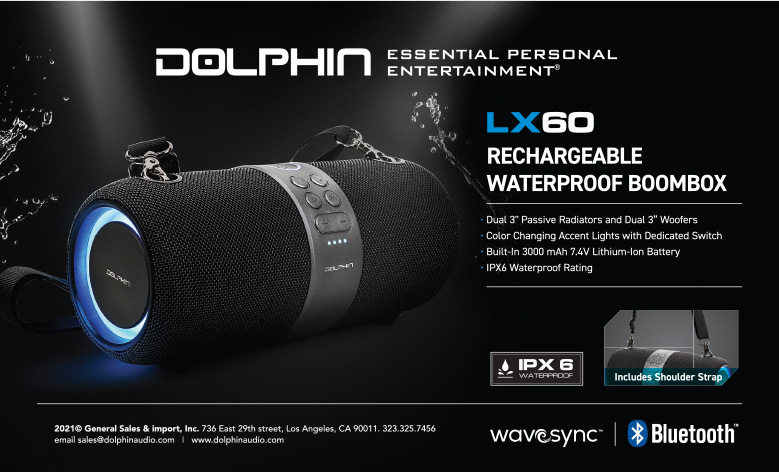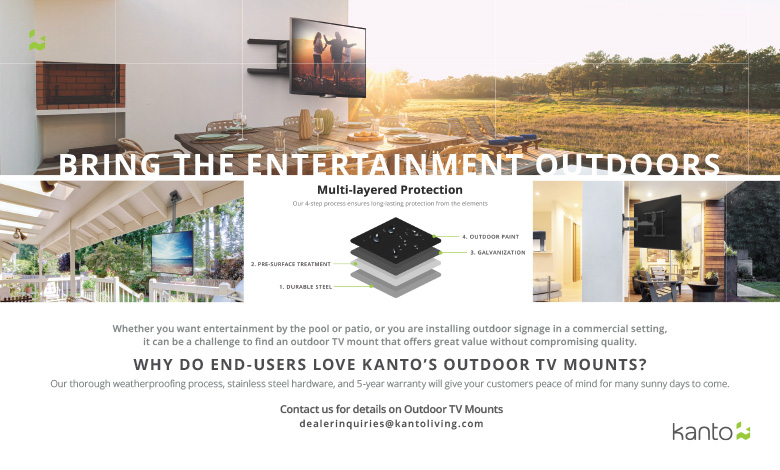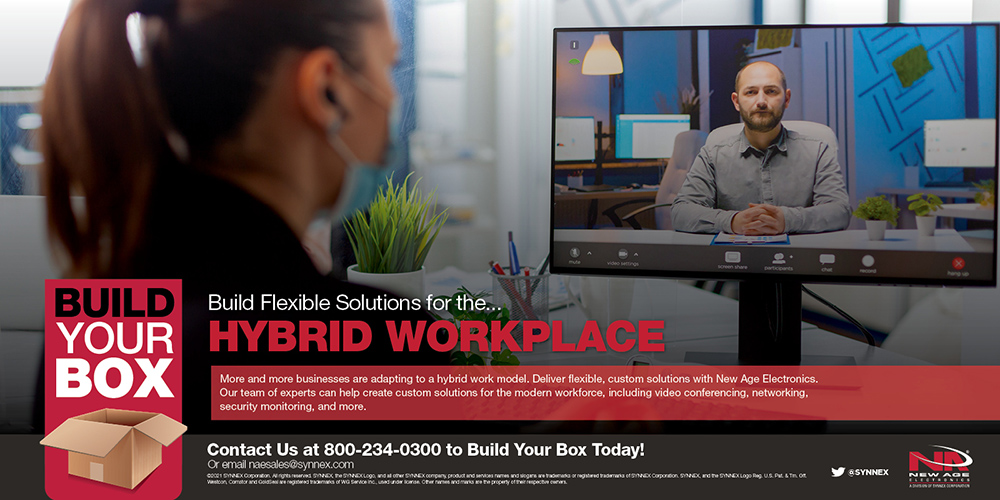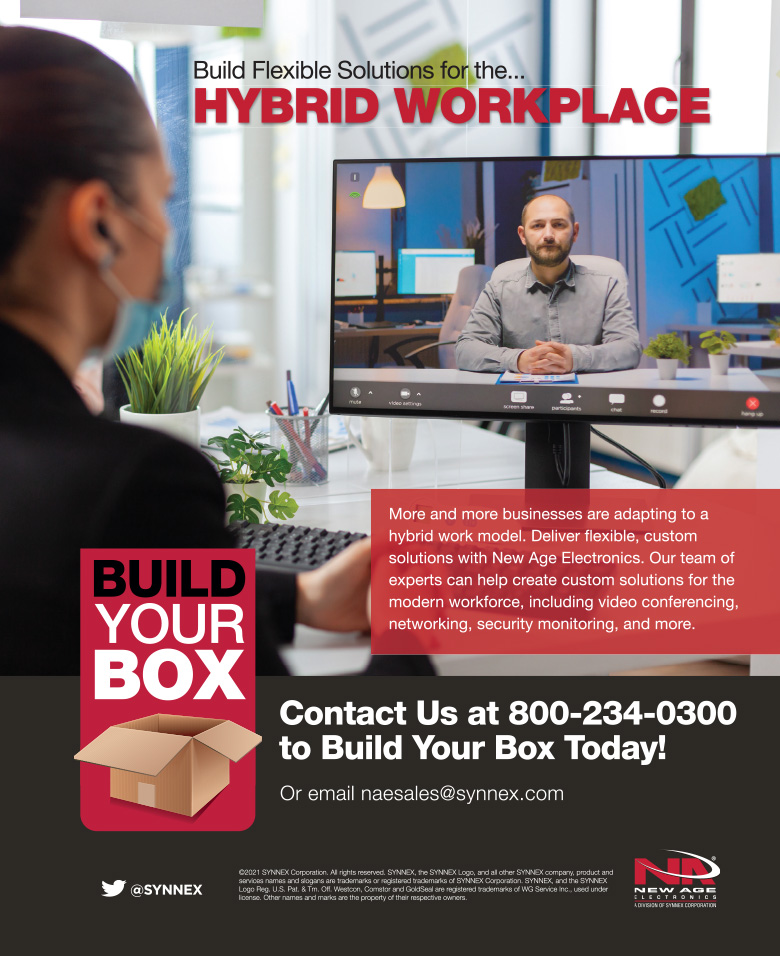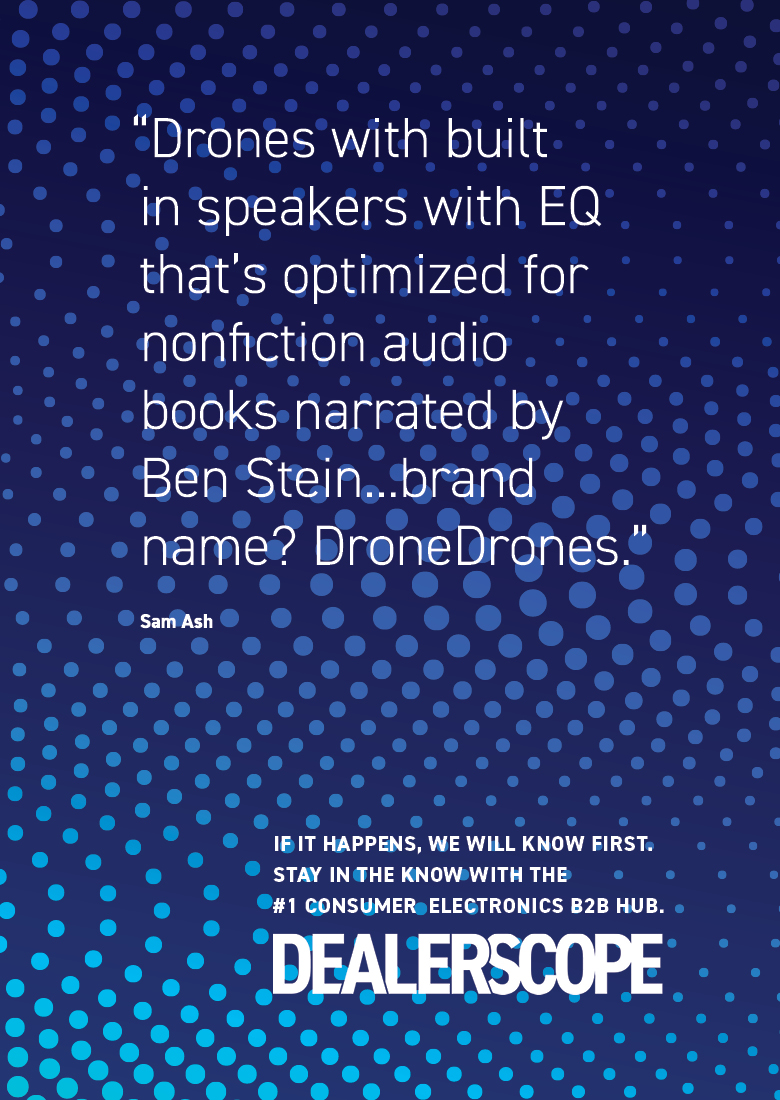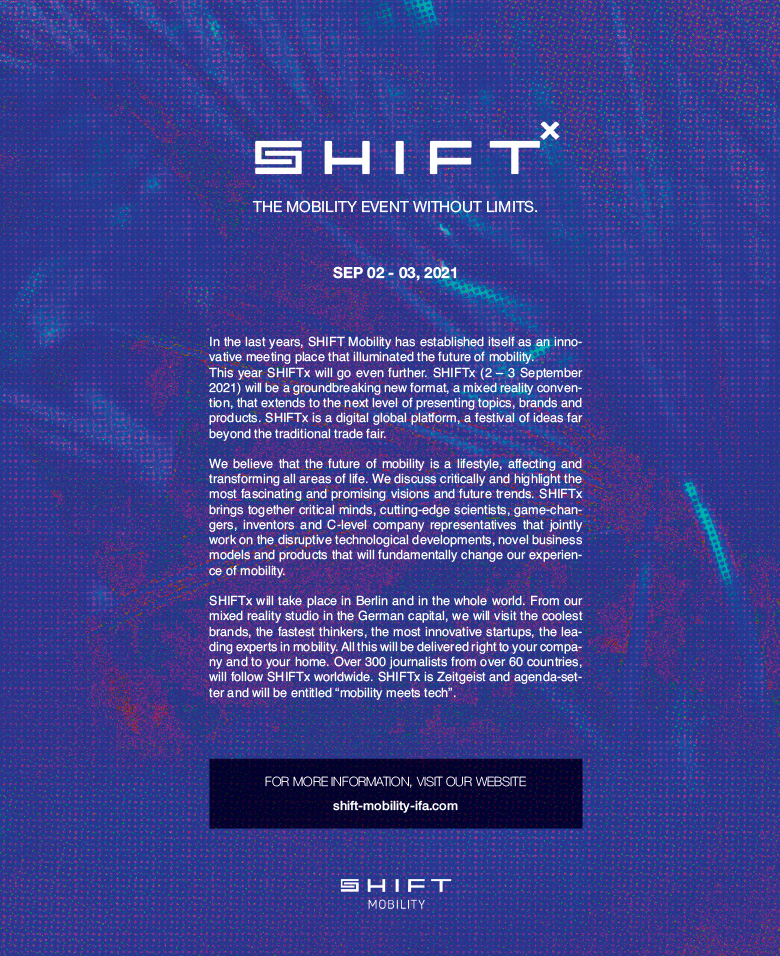Inside the Dealerscope July 2021 issue: In our “40 Under 40” award-winner profiles, you’ll meet the best and the brightest idea-generators and game-changers in consumer technology. In addition to telling us about their current work, they shared their thoughts on technology’s future. Plus, there’s our Black Friday and Holiday preview, Back-to-School trends coverage, and expert advice on optimizing the customer and e-commerce experience.

Changes are Welcome —
and Good

Many of us do not like and are resistant to change. But oftentimes, they signal wonderful things. CT Lab Global Media, for its part, has been going through 14 months of wonderful change. If you have seen our print issue, these changes have been evident everywhere – in the paper, the edit, the features, in our redesigned websites and newsletters, in a new digital magazine. We’ve also welcomed a great new Editor in Chief in Tom Samiljan.
And there is still more news. Maryellen Oswald, my co-worker and fellow CT Lab Publisher at our sister publication, Connected Design, is moving on to a new and exciting chapter in her life. We have been working together since my first day at Dealerscope, and I will miss her. I would like to thank her for her dedication to the CT Lab brands — but especially to Connected Design, her “baby.” We wish her well on her next endeavor.
As for me, I am honored by and excited about my new role here, as Group Publisher of CT Lab Global Media, overseeing Dealerscope and Connected Design, along with our events. I am looking forward to meeting the great leaders in the Connected Design space soon, and to working closely with them.
We also have a few new additions to the staff relating to both brands; more about that next month.
Our July Dealerscope issue spotlights our 2021 40 Under 40 honorees — a list of awesome, up-and-coming luminaries in the Consumer Technology space who are the ones to watch. Enjoy reading their profiles to learn all about these great people — present and future leaders. I congratulate each of them.
Make sure to see our features travel and back-to-school tech, and learn about how AR is being used at retail, and about ways to profile the audio buyer. Also, check out the latest about Berlin Photo Week, learn how Tik Tok’s influence can help your business, and read what advice Robert Zohn at Value Electronics can offer us in “What’s Up.” Our small appliances section presents items to keep customers cool this summer.
Lastly, we’re constantly freshening ways to present content, and in line with that, in June, we became the only B2B with an audio version of Dealerscope. We invite you to listen to it in your car, office, etc., and then let us know what you think. This a novel way to engage our readership and give them a new experience.
As always, please feel free to get in touch with me at tmonteleone@ctlab.media.
Tony Monteleone, Publisher
Experience is a plus, especially in technology: Not only do older workers bring all of the inside expertise from their previous workplaces, but they also bring their bigger professional networks, which can be a boon to any outward-facing or strategic position. Older workers can serve as mentors to younger workers, passing on years of knowledge and experience to the next generation. What’s more, studies have found that multigenerational teams tend to work faster — maybe learning from one’s mistakes helps teams cut to the chase? You can still move fast, but you don’t always have to break things as you’re doing it.
If you’re old enough to remember 2007, when Mark Zuckerberg said “younger people are just smarter,” then you know that ageism in the consumer technology business is nothing new, and that it’s real. It’s important that all of us, no matter our generation, address this weak link in diversity, equity, and inclusion (DEI) initiatives, and effect change. This will not only help the current generation of older workers as they make their way back into the post-pandemic workforce, but also anyone who goes from being under 40 to over 40.
[/vc_column_text]

Tom Samiljan
Besides legislation, what else can be done for tech companies to round out their multigenerational diversity with older workers? From looking at adapting pay scales and offering flexible work schedules to updating DEI policies and coaching HR recruiters, there are plenty of steps that can be taken now (see this insightful piece from the Harvard Business Review for more on this).
Experience is a plus, especially in technology: Not only do older workers bring all of the inside expertise from their previous workplaces, but they also bring their bigger professional networks, which can be a boon to any outward-facing or strategic position. Older workers can serve as mentors to younger workers, passing on years of knowledge and experience to the next generation. What’s more, studies have found that multigenerational teams tend to work faster — maybe learning from one’s mistakes helps teams cut to the chase? You can still move fast, but you don’t always have to break things as you’re doing it.
If you’re old enough to remember 2007, when Mark Zuckerberg said “younger people are just smarter,” then you know that ageism in the consumer technology business is nothing new, and that it’s real. It’s important that all of us, no matter our generation, address this weak link in diversity, equity, and inclusion (DEI) initiatives, and effect change. This will not only help the current generation of older workers as they make their way back into the post-pandemic workforce, but also anyone who goes from being under 40 to over 40.
[/vc_column_text]








Tom Samiljan
A 2018 study by PwC said that approximately $3.5 trillion could be added to OECD (Organisation for Economic Co-operation and Development) economies by holding onto older workers longer — not least because of the additional tax revenues and spending power. Companies that don’t employ older workers are missing out. Studies have shown that older workers tend to have a strong work ethic and are loyal, one of the by-products of the tough job market. According to the U.S Bureau of Labor Statistics, older workers don’t call in sick as often as younger workers and are less likely to job-hop than their Gen Z and Millennial counterparts. Of course, there are always exceptions to any statistic, rule, or generalization, but considering some of the struggles that many employers are having filling positions at the moment, it seems a no-brainer to tap into the experience and wisdom of older workers.
Besides legislation, what else can be done for tech companies to round out their multigenerational diversity with older workers? From looking at adapting pay scales and offering flexible work schedules to updating DEI policies and coaching HR recruiters, there are plenty of steps that can be taken now (see this insightful piece from the Harvard Business Review for more on this).
Experience is a plus, especially in technology: Not only do older workers bring all of the inside expertise from their previous workplaces, but they also bring their bigger professional networks, which can be a boon to any outward-facing or strategic position. Older workers can serve as mentors to younger workers, passing on years of knowledge and experience to the next generation. What’s more, studies have found that multigenerational teams tend to work faster — maybe learning from one’s mistakes helps teams cut to the chase? You can still move fast, but you don’t always have to break things as you’re doing it.
If you’re old enough to remember 2007, when Mark Zuckerberg said “younger people are just smarter,” then you know that ageism in the consumer technology business is nothing new, and that it’s real. It’s important that all of us, no matter our generation, address this weak link in diversity, equity, and inclusion (DEI) initiatives, and effect change. This will not only help the current generation of older workers as they make their way back into the post-pandemic workforce, but also anyone who goes from being under 40 to over 40.
[/vc_column_text]








Tom Samiljan
It’s “the last acceptable bias,” as the AARP wrote in a 2019 report. Is it any wonder that the House of Representatives just passed the Protecting Older Workers Against Discrimination Act? While it has yet to be voted on by the Senate, the bill, if passed, will make it easier for U.S. workers over the age of 40 to file age discrimination lawsuits, a safeguard in the 1967 Age Discrimination Employment Act that had been weakened by a Supreme Court decision in 2009.
A 2018 study by PwC said that approximately $3.5 trillion could be added to OECD (Organisation for Economic Co-operation and Development) economies by holding onto older workers longer — not least because of the additional tax revenues and spending power. Companies that don’t employ older workers are missing out. Studies have shown that older workers tend to have a strong work ethic and are loyal, one of the by-products of the tough job market. According to the U.S Bureau of Labor Statistics, older workers don’t call in sick as often as younger workers and are less likely to job-hop than their Gen Z and Millennial counterparts. Of course, there are always exceptions to any statistic, rule, or generalization, but considering some of the struggles that many employers are having filling positions at the moment, it seems a no-brainer to tap into the experience and wisdom of older workers.
Besides legislation, what else can be done for tech companies to round out their multigenerational diversity with older workers? From looking at adapting pay scales and offering flexible work schedules to updating DEI policies and coaching HR recruiters, there are plenty of steps that can be taken now (see this insightful piece from the Harvard Business Review for more on this).
Experience is a plus, especially in technology: Not only do older workers bring all of the inside expertise from their previous workplaces, but they also bring their bigger professional networks, which can be a boon to any outward-facing or strategic position. Older workers can serve as mentors to younger workers, passing on years of knowledge and experience to the next generation. What’s more, studies have found that multigenerational teams tend to work faster — maybe learning from one’s mistakes helps teams cut to the chase? You can still move fast, but you don’t always have to break things as you’re doing it.
If you’re old enough to remember 2007, when Mark Zuckerberg said “younger people are just smarter,” then you know that ageism in the consumer technology business is nothing new, and that it’s real. It’s important that all of us, no matter our generation, address this weak link in diversity, equity, and inclusion (DEI) initiatives, and effect change. This will not only help the current generation of older workers as they make their way back into the post-pandemic workforce, but also anyone who goes from being under 40 to over 40.
[/vc_column_text]








Tom Samiljan
The technology industry is no exception in this regard. Recent age discrimination cases at Google and IBM show that the issue is rampant at America’s biggest companies. A recent survey by CWJobs revealed that some tech workers — especially those who work in IT and programming — start to feel age discrimination by the age of 29. Another study by cloud compensation software company PayScale, which dug into its massive salary database, found that only three out of 18 top tech companies — HP, Oracle, and IBM — had an employee median age over 33 years old. At the other not-too-distant end, seven of that list’s companies — Amazon, Google, Salesforce, Tesla, LinkedIn, SpaceX, and Facebook — did not have a median employee age over 30 years old. The rest of the U.S. business world’s employee median age of 42 years old (41.9 in 2019, according to the U.S. Bureau of Labor Statistics) seems positively geriatric in comparison. It’s not any better outside of those Big Tech giants, either: a recent people analytics platform WerkLabs survey found that 81 percent of tech industry professionals experienced some form of age discrimination during the job search process. And in Silicon Valley, “the cutoff age is 32,” for younger CEOs looking for investors, as Y Combinator Co-Founder Paul Graham told The New York Times back in 2013.
It’s “the last acceptable bias,” as the AARP wrote in a 2019 report. Is it any wonder that the House of Representatives just passed the Protecting Older Workers Against Discrimination Act? While it has yet to be voted on by the Senate, the bill, if passed, will make it easier for U.S. workers over the age of 40 to file age discrimination lawsuits, a safeguard in the 1967 Age Discrimination Employment Act that had been weakened by a Supreme Court decision in 2009.
A 2018 study by PwC said that approximately $3.5 trillion could be added to OECD (Organisation for Economic Co-operation and Development) economies by holding onto older workers longer — not least because of the additional tax revenues and spending power. Companies that don’t employ older workers are missing out. Studies have shown that older workers tend to have a strong work ethic and are loyal, one of the by-products of the tough job market. According to the U.S Bureau of Labor Statistics, older workers don’t call in sick as often as younger workers and are less likely to job-hop than their Gen Z and Millennial counterparts. Of course, there are always exceptions to any statistic, rule, or generalization, but considering some of the struggles that many employers are having filling positions at the moment, it seems a no-brainer to tap into the experience and wisdom of older workers.
Besides legislation, what else can be done for tech companies to round out their multigenerational diversity with older workers? From looking at adapting pay scales and offering flexible work schedules to updating DEI policies and coaching HR recruiters, there are plenty of steps that can be taken now (see this insightful piece from the Harvard Business Review for more on this).
Experience is a plus, especially in technology: Not only do older workers bring all of the inside expertise from their previous workplaces, but they also bring their bigger professional networks, which can be a boon to any outward-facing or strategic position. Older workers can serve as mentors to younger workers, passing on years of knowledge and experience to the next generation. What’s more, studies have found that multigenerational teams tend to work faster — maybe learning from one’s mistakes helps teams cut to the chase? You can still move fast, but you don’t always have to break things as you’re doing it.
If you’re old enough to remember 2007, when Mark Zuckerberg said “younger people are just smarter,” then you know that ageism in the consumer technology business is nothing new, and that it’s real. It’s important that all of us, no matter our generation, address this weak link in diversity, equity, and inclusion (DEI) initiatives, and effect change. This will not only help the current generation of older workers as they make their way back into the post-pandemic workforce, but also anyone who goes from being under 40 to over 40.
[/vc_column_text]








Tom Samiljan
Now, not to take any credit from this superlative group of 20- and 30-something innovators — we are fortunate to have them in our industry — but every time I see a list about marvelous mavericks under a certain age, I’m always reminded of the talent over a certain age. For many years now, in the majority of workplaces and industries, age discrimination for some starts once a worker hits 40, and skyrockets for workers over the age of 50. According to a recent survey by the AARP, 78 percent of older workers (between the ages of 40 and 65) had either witnessed or experienced some form of age discrimination in the past year.
The technology industry is no exception in this regard. Recent age discrimination cases at Google and IBM show that the issue is rampant at America’s biggest companies. A recent survey by CWJobs revealed that some tech workers — especially those who work in IT and programming — start to feel age discrimination by the age of 29. Another study by cloud compensation software company PayScale, which dug into its massive salary database, found that only three out of 18 top tech companies — HP, Oracle, and IBM — had an employee median age over 33 years old. At the other not-too-distant end, seven of that list’s companies — Amazon, Google, Salesforce, Tesla, LinkedIn, SpaceX, and Facebook — did not have a median employee age over 30 years old. The rest of the U.S. business world’s employee median age of 42 years old (41.9 in 2019, according to the U.S. Bureau of Labor Statistics) seems positively geriatric in comparison. It’s not any better outside of those Big Tech giants, either: a recent people analytics platform WerkLabs survey found that 81 percent of tech industry professionals experienced some form of age discrimination during the job search process. And in Silicon Valley, “the cutoff age is 32,” for younger CEOs looking for investors, as Y Combinator Co-Founder Paul Graham told The New York Times back in 2013.
It’s “the last acceptable bias,” as the AARP wrote in a 2019 report. Is it any wonder that the House of Representatives just passed the Protecting Older Workers Against Discrimination Act? While it has yet to be voted on by the Senate, the bill, if passed, will make it easier for U.S. workers over the age of 40 to file age discrimination lawsuits, a safeguard in the 1967 Age Discrimination Employment Act that had been weakened by a Supreme Court decision in 2009.
A 2018 study by PwC said that approximately $3.5 trillion could be added to OECD (Organisation for Economic Co-operation and Development) economies by holding onto older workers longer — not least because of the additional tax revenues and spending power. Companies that don’t employ older workers are missing out. Studies have shown that older workers tend to have a strong work ethic and are loyal, one of the by-products of the tough job market. According to the U.S Bureau of Labor Statistics, older workers don’t call in sick as often as younger workers and are less likely to job-hop than their Gen Z and Millennial counterparts. Of course, there are always exceptions to any statistic, rule, or generalization, but considering some of the struggles that many employers are having filling positions at the moment, it seems a no-brainer to tap into the experience and wisdom of older workers.
Besides legislation, what else can be done for tech companies to round out their multigenerational diversity with older workers? From looking at adapting pay scales and offering flexible work schedules to updating DEI policies and coaching HR recruiters, there are plenty of steps that can be taken now (see this insightful piece from the Harvard Business Review for more on this).
Experience is a plus, especially in technology: Not only do older workers bring all of the inside expertise from their previous workplaces, but they also bring their bigger professional networks, which can be a boon to any outward-facing or strategic position. Older workers can serve as mentors to younger workers, passing on years of knowledge and experience to the next generation. What’s more, studies have found that multigenerational teams tend to work faster — maybe learning from one’s mistakes helps teams cut to the chase? You can still move fast, but you don’t always have to break things as you’re doing it.
If you’re old enough to remember 2007, when Mark Zuckerberg said “younger people are just smarter,” then you know that ageism in the consumer technology business is nothing new, and that it’s real. It’s important that all of us, no matter our generation, address this weak link in diversity, equity, and inclusion (DEI) initiatives, and effect change. This will not only help the current generation of older workers as they make their way back into the post-pandemic workforce, but also anyone who goes from being under 40 to over 40.
[/vc_column_text]








Tom Samiljan
A WORD FROM OUR EDITOR IN CHIEF
What Happens to the ‘Over 40’ in Consumer Technology?


From industry research and DIY robotics to smart wine coolers and electric airplanes, the achievements of our 40 Under 40 Honorees for 2021 are impressive and may well dictate how the consumer technology industry conducts business in the next decade or two. Make sure to check those out.
Now, not to take any credit from this superlative group of 20- and 30-something innovators — we are fortunate to have them in our industry — but every time I see a list about marvelous mavericks under a certain age, I’m always reminded of the talent over a certain age. For many years now, in the majority of workplaces and industries, age discrimination for some starts once a worker hits 40, and skyrockets for workers over the age of 50. According to a recent survey by the AARP, 78 percent of older workers (between the ages of 40 and 65) had either witnessed or experienced some form of age discrimination in the past year.
The technology industry is no exception in this regard. Recent age discrimination cases at Google and IBM show that the issue is rampant at America’s biggest companies. A recent survey by CWJobs revealed that some tech workers — especially those who work in IT and programming — start to feel age discrimination by the age of 29. Another study by cloud compensation software company PayScale, which dug into its massive salary database, found that only three out of 18 top tech companies — HP, Oracle, and IBM — had an employee median age over 33 years old. At the other not-too-distant end, seven of that list’s companies — Amazon, Google, Salesforce, Tesla, LinkedIn, SpaceX, and Facebook — did not have a median employee age over 30 years old. The rest of the U.S. business world’s employee median age of 42 years old (41.9 in 2019, according to the U.S. Bureau of Labor Statistics) seems positively geriatric in comparison. It’s not any better outside of those Big Tech giants, either: a recent people analytics platform WerkLabs survey found that 81 percent of tech industry professionals experienced some form of age discrimination during the job search process. And in Silicon Valley, “the cutoff age is 32,” for younger CEOs looking for investors, as Y Combinator Co-Founder Paul Graham told The New York Times back in 2013.
It’s “the last acceptable bias,” as the AARP wrote in a 2019 report. Is it any wonder that the House of Representatives just passed the Protecting Older Workers Against Discrimination Act? While it has yet to be voted on by the Senate, the bill, if passed, will make it easier for U.S. workers over the age of 40 to file age discrimination lawsuits, a safeguard in the 1967 Age Discrimination Employment Act that had been weakened by a Supreme Court decision in 2009.
A 2018 study by PwC said that approximately $3.5 trillion could be added to OECD (Organisation for Economic Co-operation and Development) economies by holding onto older workers longer — not least because of the additional tax revenues and spending power. Companies that don’t employ older workers are missing out. Studies have shown that older workers tend to have a strong work ethic and are loyal, one of the by-products of the tough job market. According to the U.S Bureau of Labor Statistics, older workers don’t call in sick as often as younger workers and are less likely to job-hop than their Gen Z and Millennial counterparts. Of course, there are always exceptions to any statistic, rule, or generalization, but considering some of the struggles that many employers are having filling positions at the moment, it seems a no-brainer to tap into the experience and wisdom of older workers.
Besides legislation, what else can be done for tech companies to round out their multigenerational diversity with older workers? From looking at adapting pay scales and offering flexible work schedules to updating DEI policies and coaching HR recruiters, there are plenty of steps that can be taken now (see this insightful piece from the Harvard Business Review for more on this).
Experience is a plus, especially in technology: Not only do older workers bring all of the inside expertise from their previous workplaces, but they also bring their bigger professional networks, which can be a boon to any outward-facing or strategic position. Older workers can serve as mentors to younger workers, passing on years of knowledge and experience to the next generation. What’s more, studies have found that multigenerational teams tend to work faster — maybe learning from one’s mistakes helps teams cut to the chase? You can still move fast, but you don’t always have to break things as you’re doing it.
If you’re old enough to remember 2007, when Mark Zuckerberg said “younger people are just smarter,” then you know that ageism in the consumer technology business is nothing new, and that it’s real. It’s important that all of us, no matter our generation, address this weak link in diversity, equity, and inclusion (DEI) initiatives, and effect change. This will not only help the current generation of older workers as they make their way back into the post-pandemic workforce, but also anyone who goes from being under 40 to over 40.








Tom Samiljan
PROFILING BUYERS
Profiling the Audio System Buyer
Some people love music, others just enjoy it. Get them the right solution by getting to know them.


By Randy Blanchard, Director of Audio Products, Vanco


A home audio system is, by definition, a bit of a luxury. There are lots of practical applications for sound in both commercial and residential environments, including privacy, wellness, and notification, but most homeowners think of audio strictly in terms of entertainment. It’s a want, not a need — as such, customers’ appetite for investing in audio tends to be correlated to two things: passion and knowledge. In order to guide customers to the right audio solution, dealers need to help them honestly and accurately locate themselves on the passion scale, and arm them with the knowledge to get the results they truly want.
Some people love music, and some people just enjoy it. This same distinction extends to other forms of luxury. There are those who like food and indulge in an ice cream cone as a treat, and there are those who love food and save up all year for a multi-course tasting menu prepared by a Michelin-starred chef. People who like movies will play one on the living room TV while they relax with their family; people who love movies will only watch them in a space that has been expertly tuned for cinematic visuals and audio. All of these luxury experiences now support a booming marketplace of goods and services promising to allow consumers to recreate professional-grade experiences at home.
Those who enjoy music — rather than love it — prize convenience and ease of access. They don’t mind listening to music on Bluetooth headphones despite the limited bandwidth, because wires are annoying. They’re happy to listen to MP3s or other lossy compression formats, because the tiny file size translates to instant access to an unlimited library of songs stored on their phones or delivered over mobile data networks. Music, for them, is a complement to other experiences: driving in a car, dancing, making dinner, or chatting with friends.


There is an impressive range of DIY consumer sound systems available for this customer profile. For those primarily interested in upgrading their movie or gaming experience, for instance, the CineHome PRO system from Enclave allows a user to achieve THX-certified surround sound without needing to run wire between the speakers. Each speaker must connect to power, but they connect to each other wirelessly: easy. If being able to listen to music anywhere in the home is a top priority, consumer brands like Sonos, Google, and Amazon offer speakers with a small form factor that can be networked to allow your music to follow you from space to space. Setup is minimal and control is app-driven: easy. In terms of form factor, networking, and user interface, the consumer audio sector has achieved great things.
For those who love it, music itself is the experience. They don’t want to multitask while listening; they prefer to savor every nuance of the musical experience. This customer is likely to invest in a high-bandwidth streaming service or own a high-quality turntable. Paying for the high-fidelity tier of a music streaming service doesn’t automatically result in a great listening experience, though. That requires high-quality transducers and thoughtful system design, which begs the question: how good is good enough?
This is where experience enters the equation. Many DIY systems promise a near-live-sound experience and seem to have the specs to back it up, but music appreciation is fundamentally emotional. Designing a reference-quality sound system takes not just great engineering and design, but also an ear for subjective qualities. The problem is that many music lovers literally don’t know what they’re missing. They have never experienced what can be. They may be dissatisfied, always seeking to upgrade, but without any basis for comparison, they will never be able to define the qualities they’re looking for.
Experience is where knowledge and passion meet. For the customer base that legitimately qualifies as music lovers, dealers need to curate demonstrations of what’s possible with installed sound. Create environments that have been tuned for different kinds of listening experiences. Set up DIY systems for comparison as well: let customers experience what they’re missing. Some people won’t feel much, or even detect a difference. Some people will have a near-religious experience. Both customer profiles will be grateful to the dealer that helped them make a truly informed decision.
This experience is as important for dealers as it is for their customers. While working at ADI as the AV Business Development Manager I made a joint call with our regional account manager to Phoenix Unequaled Home Entertainment in Memphis. After our call was completed, I noticed a Steinway Lyngdorf system in one of their demo rooms. I have had the opportunity to both listen to and sell many reference-level systems in my career, but my co-worker had never experienced true reference audio. I asked for a demonstration, and after listening for a few minutes, I asked what he thought. His answer was, “That was emotional.” Boom, he got it.
For those customers that do decide to take the leap into installed sound, connecting them not just to the proper components but also to the required expertise is essential. The knowledge and sensitivity to implement a high-quality installed system is the most valuable element of the purchase. Dealers must demonstrate that they have the expertise to discover not just the listening experience qualities that matter most to the customer, but also the additional use cases that should inform the design.
Just like a demo, the discovery process is an opportunity for education. Once a customer knows they need a high-end system to satisfy their passion, a host of new possibilities opens to them. For example, is a customer extremely sensitive to sound bleed from adjacent spaces? Installed sound solutions are uniquely designed to address issues such as these. Case in point: The speakers that my company, Vanco, makes include the patented Beale Street Sonic Vortex technology, which features a unique design with roomy, built-in enclosures that not only ensure sound is completely contained within the listening environment, but also keeps drywall intact. Do multiple family members work or learn from home? A home-wide system can be leveraged for sound masking, providing privacy and quiet throughout the workday. On the aesthetic front, is there an interior design minimalist in the house who cannot stand the sight of even discrete installed speakers? Amina Sound’s speakers use Vibrational Panel Technology in place of speaker cones for a truly invisible finish.
It’s not enough for dealers to know their customers; they’ve got to help their customers better know themselves. Once a customer has assessed what they like and what they love, savvy dealers can, through demos and thoughtful questions, give them the knowledge to truly satisfy that passion. This is relationship selling. It requires patience and expertise. The reward, though, is gratitude, trust, and investment from the customer.
Summary
- The appetite for investment in audio systems is guided by the customer’s passion and knowledge.
- Casual listeners have access to DIY solutions suited to a variety of applications.
- True aficionados likely require a demo in order to articulate what they want
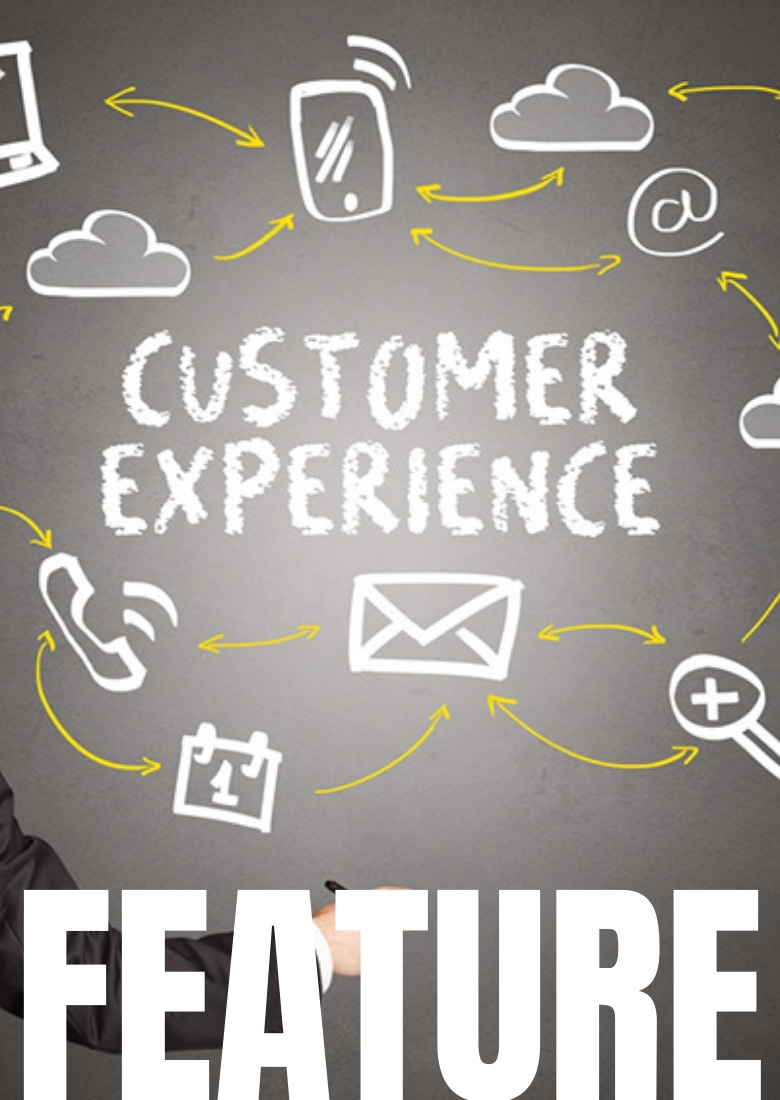

Personalizing the Customer Experience
Smarter Shopping
Why retailers need to personalize the customer experience, and how harnessing data is the key to making that happen.


By Bhrugu Pange


The term ‘retail experience’ is often centered in the physical realm — namely, as the combination of in-store phenomena and shopping ‘Easter eggs’ that make the experience exciting. What this approach leaves out is the more internal, organic experience laid out by the data driving every interaction a customer has with a brand or retailer. As our world began to require digital interactions — with each other as well as with companies — at the start of the COVID-19 pandemic, that latter version of “experience” has become much more important, as retailers try to bring their digital offerings into line with the physical. We’ve seen a number of them leave out a critical piece of the puzzle, however. This article will examine that missing piece. First, we’ll look at the fragmented approach historically taken on the road to ‘customer experience,’ what this model leaves out, and a few examples. Then we’ll will dive into the shifting mindset in corporate leadership, addressing new modes of data analysis toward creating a new standard for the customer journey — and, further, why we actually need to expand our understanding of ‘experience’ beyond just that of the customer.
The weak links are low-hanging fruit.
Why should any company with retail operations expend energy and funds in upgrading their customer experience? The measure of the potential impact speaks for itself. According to one report, by further personalizing the customer experience, especially in terms of digital interaction, several industry players have increased the lifetime value of a customer by 20 to 30 percent across high-priority segments. It’s easier than one might think to get this wrong — even a small misstep can cause outsized losses. The weak-link theory explains that one bad experience could make an otherwise loyal customer walk away forever.
Looking at a common approach to customer service reveals a number of potential weak links. Take, for example, a recent experience a friend described to me while trying to get his car serviced. Appointments for this particular brand have to be made using their app, but the app was down. My friend found a number to call, but no one answered at the other end. Now, even though the car only needs servicing a few times a year, technical glitches in accessing something as basic as making a service appointment reveal a massive missed opportunity. This is a fractured, fragmented approach to customer service: one destination for one kind of need (servicing), and another destination thrown in (now the app needs servicing, too). The end result, and final insult, is that there is no one at the other end communicating with the customer.
Instead, there could be an integration of past customer data with current interactions: The app knows when your car needs servicing — based on when you bought it, when you last brought it in, and how much you drive — and it reminds you to make an appointment. It may offer you a coupon to the on-site café while you wait; it may suggest a number of weather-appropriate add-ons to servicing your car based on the time of year and the climate.
How one small tweak revolutionized Amazon’s shopping experience.
Without such insight deployed in current day-to-day interactions, a retail operation will disappoint its customers with a weak link in experience, but this “miss” also represents a major point of friction. Amazon is the standalone example of just how effective tweaking the system to remove friction can be. The single biggest move the company made toward that end was the one-click buy button. When that patent expired in 2017, it was, by one account, valued at $2.4 billion. It had single-handedly increased company sales by five percent, owing to its ability to decrease cart abandonment, which generally rests at a rate of about 70 percent. However, through data analysis, Amazon figured out that the place in the journey where customers most often abandoned their carts was when they had to fill out all of their information. The one-click button was Amazon’s tweak, allowing people to bypass repetitive data entry. It found that customers would rather have that ease of functioning than buy from independent retailers or other chains — even despite unfavorable price comparisons. In other words, they’d rather spend more at Amazon, just to reduce the friction.


Personalizing the retail experience means getting to know your customers in new ways.
A successful approach to experience takes into account every interaction a customer has with the company — from store, to website and app, to transactions, phone calls, and emails. These interactions are both analog and digital. And all of the data gleaned from them need to go toward making the experience not simply satisfying, but delightful.
We know that the more personalized an interaction, the more emotional the level of engagement. Companies have a range of tools they can use to capture and keep the customer’s attention, including human-centric design, visual design, and other psychological principles. However, what provokes delight is not the same for every customer with every brand. One take on personalization for Amazon is a delivery tracker that tells you exactly how many stops away your package is. Does this cost the e-tailer many millions of dollars for a service that changes virtually nothing? Absolutely. But does it make you feel special? You bet it does.
After a tough pandemic year, demand for luxury goods isn’t expected to bounce back to pre-pandemic levels until the end of 2022 — however, a November 2020 report shows online luxury shopping to have doubled, from 12 percent of total purchases in 2019 to 23 percent in 2020, and predicts that e-commerce will be the dominant channel for luxury by 2025. Industry leader Hermès was the first luxury brand to launch an e-commerce channel, way back in 2001, and has continued to expand and improve its online experience, to the point where, by July 2020, the company reported, even in the face of a massive revenue drop due to COVID-19, that 75 percent of its e-commerce customers were new. Even if people couldn’t afford it, Hermès listened, and made them feel special.
As the luxury sector — indeed, all of retail — eventually returns to normal, share of online shopping will only continue to grow. It will be critical for companies to design online experiences that are the digital twins of the personalized attention, recommendations, and structural control that a customer service rep/concierge may offer to an in-store customer. Emerging techniques to achieve this, such as machine learning (AI)-driven “concierge bots” and curated online journey managers, all rely on past purchase history, consumer demo- and psychographics, purchase power, and more. All of these algorithms are hungry for data.
Herein lie some of the keys to a successful ‘retail experience.’ Conversion alone is not enough. Retention and resurrection — adopting the product, then coming back for more — are also critical to a fully successful experience. In order to get there, much needs to evolve from our traditional approach, including our models of data management and analysis, corporate culture and leadership.
Keeping track of your data.
Here’s a scenario you may find familiar: You try to return a pair of pants you bought online via a store’s mobile app, which gives you a number to call; the representative on the other end of the line can’t find your order number and you don’t know it, either; it’s a time-consuming and frustrating experience. On the flip side, we’ve already looked at a number of examples in which brands use the data they’ve gathered about their customers to make the experience — everything from shopping to purchasing to owning — more seamless, frictionless, and fun. Here we’ll focus on how to get there: how to approach your data, how it can be put to use, and the necessary accompanying shift in mindset, leadership and culture.
We all know that there is a wealth of possibility in data. But keeping the totality of customer data in one place — in one massive, unwieldy platform — is a pipe dream. The current popular system of housing certain bits of data in different departments, depending on perceived relevance, leads to missing pieces for some and repetition for others… a similar failure. Instead, data needs to live in multiple locations that are able to run on their own but can communicate with one another in real time. The front-end website can be fed enough information on the back end to monitor the customer’s journey without having to hold every piece of that customer’s data itself.
A modern approach to housing, managing, and feeding data is important because you can only use what you can access. A couple of examples come to mind. One company we work with built a tool that can predict when a customer is about to abandon a cart, based on past purchase data as well as on the behaviors and habits of individuals who are demographically similar. We also discussed the example of Amazon’s one-click button — the e-commerce giant’s answer to cart abandonment as a major source of retail loss and a prime area for improvement. My client’s solution to that problem was to come up with a fully automated tool that can identify the critical moment of cart abandonment and create a personalized discount coupon for the customer, keeping the customer on track.
Another company I work with tracks sentiment through data, to find the precise point when a consumer’s sentiment shifts. The idea is to solve for weak-link theory, which, as we discussed earlier, explains that just one unpleasant interaction, even among overall positive experiences, is enough to lose a customer. The solution this company offers uses data from a range of customer interactions to determine if and when sentiment turns negative, and if so, to proactively reach out and re-engage the customer. The common thread connecting these tools is that they analyze the whole journey. How did the consumer get to making that purchase, in that particular position? What did they look at and abandon along the way? These data points represent key intelligence and areas for machine learning and pattern recognition to work behind the scenes.
Looking at data through the user experience.
The holistic integration of data, however, is only made possible by a corresponding unification of the ingredients that together comprise whatever it means when we use the term ‘experience.’ These include digital experience, analog or in-store experience, customer-company touchpoints, as well as where else the customer was looking before they even reached the company, the marketing they saw on Instagram, and the advertisement in the podcast they listened to; all of these ingredients are intertwined. There is a massive disconnect when corporate structure fails to realize that essentially unified nature. The result is that it remains segmented within itself. What were once silos of different information, controlled by different people — purchasing, merchandising, Chief of Digital Operations, Chief Information Officer (CIO) — need to come together. Just as the data must talk to each other, so, too, must the leadership.
How management can help harness data.
The CIO especially is now being charged with moving from function-centric applications to user-centric ones. That bears repeating – it’s the CIO’s job not to think in terms of the functionality of a given application, but to how the user engages with it. And by “user,” we could be referring either to the external user (i.e., the consumer), or the internal user (for example, the operations team). This thought is the backbone of an article in the Harvard Business Review, “Why Every Company Needs a CXO,” which describes the integral part that employee experience (EX) plays in customer experience (CX), and advocates for the creation of a new position, the Chief Experience Officer (CXO), to oversee a more holistic approach. Denise Lee Yohn, the article’s author, explains how so many companies focus only on the customer experience — ironically, to the detriment of customer experience: “If an organization separates leadership CX from EX, disconnects between CX and EX are likely to arise, even if those roles are part of the executive team. The fact is, employees can and will only deliver experiences to customers that they experience themselves.” Similar thinking and foundations underpin this approach to experience, both customer and employee, and their data-driven upgrades. Companies must rethink their internal operations, otherwise their insides won’t match their shiny new outsides, and that gap will become clear.
Bringing retail into the digital age requires more than just a website. Rather, precision data tools championed by the right leadership is critical in fueling brand success. Of course, digitization became a more pressing issue as more and more people started to shop from home during the pandemic, and we can anticipate that for some, those habits will remain, even as pandemic-era stay-at-home orders are lifted. One important lesson from the past year or so is that none of this will work without flexibility. Machine learning tools can analyze vast amounts of data, recognize patterns, and then implement tools to boost profits based on that knowledge — but any of those patterns can change at the drop of a hat. It’s imperative that our algorithms are constantly ready to experiment and learn alongside the corporate leadership that harnesses them. It’s only with their dual dynamism that retail can reach its potential for a seamlessly integrated, personal, and delightful experience.
SUMMARY:
- Personalizing user experience can lead to a 20 to 30 percent bump in lifetime value of a customer across high-priority segments.
- Missing or weak links can create friction, causing breakdowns in communications and service; genius tweaks like the one-click payment button and delivery tracking can remove friction.
- Successful experience encompasses every interaction a customer has with the company, digital and analog — from store, to website and app, to transactions, phone calls and emails.
Bhrugu Pange is a Managing Director and leads the Technology Solutions practice at global management consultant AArete. He can be reached at bpange@aarete.com.
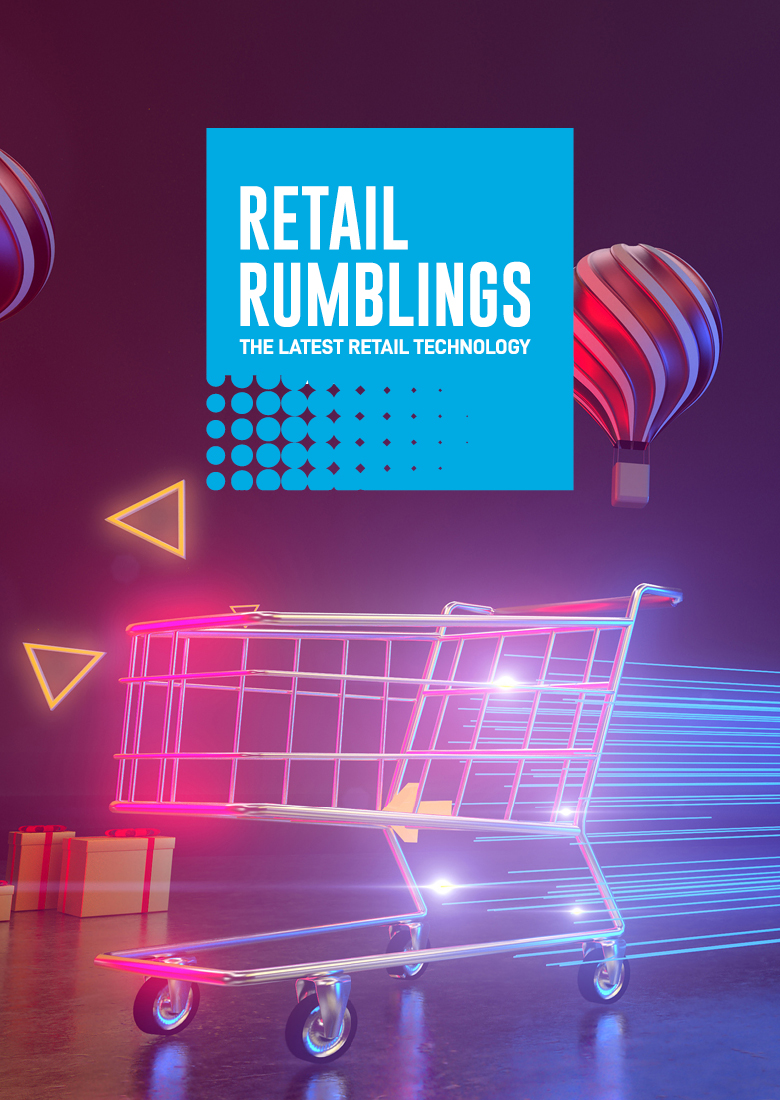

CE RETAIL TECHNOLOGY
June 2021 CE News


Facebook to Bring Shops to WhatsApp
In an online audio session last month, Facebook CEO Mark Zuckerberg revealed that WhatsApp users will soon be able to buy products and other merchandise from individual retailers on Facebook Shops. Merchants can set up storefronts on the messaging app and talk directly with shoppers. Shops is also coming to Facebook Marketplace, while Instagram will soon launch an AI-powered visual product search.
https://about.fb.com/news/2021/06/new-ways-to-shop-for-products-you-love-across-our-apps/
Virtual Shopping Platform Hero Launches Shoppable Video Feature
Already used by CE brands such as Dyson, Lenovo, and Nokia, virtual video and conversational shopping platform Hero has launched a new feature that lets in-store salespeople and product experts create short-form shoppable videos. The videos can then be implemented on a company’s or retailer’s e-commerce website, and consumers can chat directly with a salesperson or product expert and make a purchase.
https://www.usehero.com/news/ecommerce-comes-alive-with-stories-by-hero/
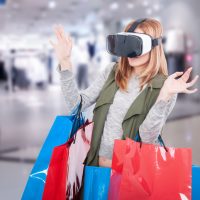

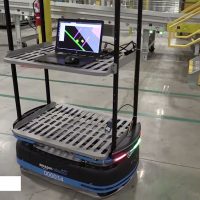

Amazon Leans on Robots for Worker Safety
Amazon has been testing out a trio of autonomous robots for potential use in its warehouse facilities. The three candidates for the job include: “Bert,” who carries carts and goods, “Scooter,” who transports carts like a train, and “Kermit,” who hauls tote-boxes similar to a truck. Amazon expects these robotic employees will significantly reduce the number of warehouse-related injuries.
Rebounding From the Worker Shortage May Mean Raising Your Starting Wage
Even though the economy remains down by more than 7.5 million jobs compared to pre-COVID numbers, businesses are finding it hard to fill positions. According to The Washington Post, among rebounding companies, the one common successful thread for finding workers is raising the minimum hourly wage to $15.
https://www.washingtonpost.com/business/2021/06/10/worker-shortage-raising-wages/
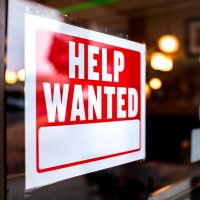



Walmart Gives Its Employees Free Samsung Smartphones
Walmart is rolling out a new app for its employees to help simplify and organize their daily tasks. The Me@Walmart app can be accessed through new Samsung Galaxy XCover Pro smartphones the company will be distributing to nearly half of its U.S. workforce. “As retail continues to evolve — and quickly — it’s more critical than ever to equip our people with the tools and technology they need for success,” Walmart said in a press release.


BLACK FRIDAY/HOLIDAY PREVIEW
A Case of the Mondays
Even with post-pandemic in-store foot-traffic up, retailers continue to shift the traditional Black Friday focus to Cyber Monday and online sales.
BY SAMSON AMORE


Black Friday is five months away, but retailers are already considering the best strategies to reel in customers — and a key part of that is embracing e-commerce.
Last year, there was virtually zero in-person shopping for Black Friday because the coronavirus pandemic severely limited retail and forced many stores to close. Some large retail chains, like GameStop, closed more than 462 brick-and-mortar locations in favor of selling entirely online. Storefronts that weren’t purged were mainly used as in-store pickup points for online buyers.
Coresight’s senior analyst, John Harmon, told Dealerscope that while malls were once typically the hot destination for Black Friday or Cyber Monday, that’s no longer the case. “This year, many consumers remain reluctant to visit stores and malls (28.9 percent as of the June 14 Coresight Research survey) and have increasingly warmed to online shopping, much of which will become permanent,” he said. “Though still reluctant, consumers are less reluctant to visit physical stores this year than last year, and store traffic is likely to be up from last year’s rock-bottom levels.”
About 30 big-name retailers that relied on a large store presence in malls, like J.C. Penney and Muji USA, filed for bankruptcy in 2020 due in part to waning foot traffic.
“Though many places have returned to somewhat normal conditions, many consumers will likely elect to continue to shop online and earlier this year,” Harmon said. “Major retailers including Best Buy, Target and Walmart have announced that their stores would remain closed on Thanksgiving Day, giving employees a break and passing on making sales on that day.”
A strong rush of demand for a limited supply — supply chains were disrupted during COVID-19, particularly for electronics retailers like Sony who rely on stock imported from Asia — will drive buyers to look for products they couldn’t find earlier in the pandemic, analysts note.
In an interview with Dealerscope, NPD Group’s executive director for consumer electronics industry analysis, Ben Arnold, said online shopping continues to gain more momentum every year, but even more so during the pandemic.
“In a lot of places, consumers were spending more of their money online,” Arnold said. “Some of that has come back in 2021 as retailers have opened up in-store operations with fewer restrictions, but consumers are still spending more money online than they were before the pandemic.”
In particular, Arnold said he expects to see a rise in people purchasing electronics directly from the manufacturer.
“One of the things that I’ve been studying through 2020 is that we’ve seen manufacturers’ websites do really well,” Arnold said. “I think part of that is consumers were looking for products that have been sold out, so they’re going directly to the brand.”
While it’s impossible to gauge this early where demand will be during Black Friday and Cyber Monday in November of this year, analysts did see a rise in spending during the holiday last year, despite in-store closures. Retailers looking to capitalize on that ongoing demand should beef up their omnichannel marketing and e-commerce operations. Some retailers may also look to maintain a physical store presence where they can, since many statewide restrictions are lifted and allow in-store shopping again. In either scenario, retailers should look to make sure they have as much inventory on hand, given so many supply-chain issues over the past year.
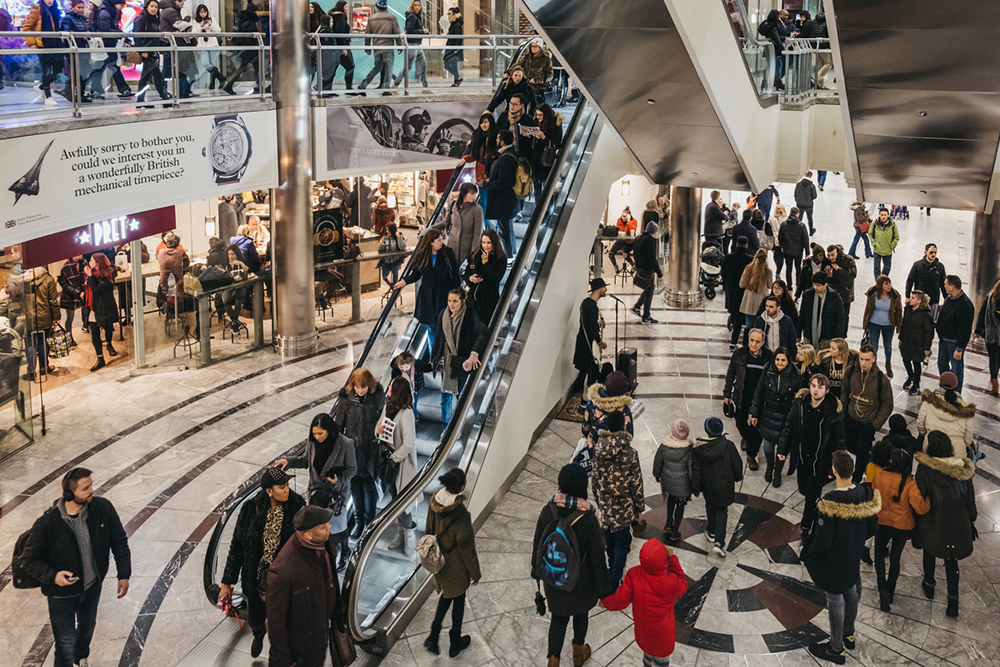

“Retailers are facing a perfect storm of supply and demand issues this holiday season,” Harmon said. “On the supply side, retailers are facing shortages of electronics goods due to the global chip shortage and West Coast port congestion. On the demand side, consumers remain reluctant to enter physical stores, as mentioned above, and many new customers have become accustomed to enjoying the convenience of shopping online.”
Harmon also noted that retailers will be competing with each other, regardless if one is in-store or only selling online, because people have spent the past year-plus online shopping and discovering new places to find goods — this, as Harmon put it, “fragments the retail consumer base.” One way retailers can stand out and capitalize on incoming demand is to begin advertising early, and often. Analysts note that companies who get their Black Friday or Cyber Monday ads out in advance of the competition have a better shot at clinching sales.
GfK’s vice president of market insights, Josh Wanderman, said: “Retailers should adjust their promotional schedule to span across the weeks leading up to the event, to maximize opportunities, especially as it relates to early shopping and discounting.”
Buying online and picking the items up in-store could come back in earnest this year, now that many stores are open. Arnold noted some people still just don’t feel comfortable having large electronics delivered — TVs are an “evergreen” Black Friday purchase, Arnold said, but noted that some people prefer to pick up those types of big purchases in-store after ordering online.
“Overall, it’s safe to assume the bulk of 2021 Black Friday sales will be conducted online, and analysts noted that many people may just wait to see if the following Cyber Monday offers better chances to buy,” Harmon said.
Here are the top three consumer electronics categories to watch around Thanksgiving, according to Dealerscope research.
Smart TVs
NPD’s Ben Arnold said that “TVs are kind of evergreen in terms of their importance” to holiday shoppers, and predicted audio and camera equipment — basically, anything that can be used to live-stream or produce videos — will be in high demand this year.
Coresight Research noted that overall, electronics spending is expected to be high this year but warned of over-saturated supply chains having difficulties. “Supplies of PCs, smartphones, flat-screen TVs, [and] gaming consoles remain tight due to higher demand from people working from home and from longer lead times due to the global chip shortage,” Coresight Research’s Harmon said.
Analyst group GfK tracks electronics trends and sales in Europe, and noted that it doesn’t expect TV sales to be as robust overseas. “While TVs will remain a key category for Black Friday in Europe as shoppers look for great prices, they are not likely to be a sales growth driver this year in Europe, because the 2020 double-digit growth seen in many markets created a saturation point,” GfK’s Wanderman said.
Laptops and Computers
Analysts predict people will look to purchase devices that are now finally becoming available, like next-generation gaming consoles or computers and laptops.
“Computers have been in such high demand, I think that people have had difficulty getting computers during the last year, so some of that demand extends into the holiday,” Arnold said.
Wanderman pointed out that there will still be demand for office supplies even though many workplaces are transitioning back to in-office work, or a hybrid model that includes remote activity.
“There are still plenty of opportunities for upgrades and replacements for items in the home and home office. Manufacturers and retailers should still be focusing on these categories for Black Friday 2021,” Wanderman noted.
Smartphones
While TVs will remain a key category for Black Friday in Europe as shoppers look for great prices, they are not likely to be a sales growth driver this year there, because the 2020 double-digit growth seen in many markets created a saturation point. We are seeing a comeback in the Telecom sector, and this is likely to persist in Europe, with 5G upgrades driving market dynamics.
“People will start to focus more on out-of-home entertainment if lockdowns continue to ease,” Wanderman said.
SUMMARY:
- E-commerce continues to dominate over in-store shopping.
- Retailers should focus on Cyber Monday to meet higher online demand.
- Laptops, computers and devices consumers couldn’t find during the pandemic are expected to be big sellers.
- In Europe, the focus is on telecom and smartphones as the area upgrades to 5G service.
INTERNATIONAL PERSPECTIVES
A Bigger Picture
Berlin Photo Week CEO Wolfgang Heinen on why the photo industry needs to expand its focus beyond hardware and software.
INTERVIEW BY TOM SAMILJAN


Berlin Photo Week CEO Wolfgang Heinen
“People are interested in the photographic heritage and creating something that’s more art than artificial.”
Launched by a mix of photographers and technology entrepreneurs two years ago, Berlin Photo Week (BPW) will be held again for the second time since 2019 on August 26-29, 2021 at the Haubentaucher, a multipurpose events venue with exhibition spaces, restaurants, clubs, and a swimming pool in Berlin’s Friedrichshain-Kreuzberg district. In addition to booths and installations by major photography brands such as Sony, Panasonic, FujiFilm, and Leica, the three-day event will offer workshops, Instagram-friendly shooting stations, photo tours, lectures, and even opportunities to buy both used and the latest new cameras. In addition, exhibitions of work by established and emerging photographers alike will be held at satellite locations in galleries, museums, and other points of interest across the city.
Even though one of its major partner exhibitions, IFA Berlin, won’t take place again until 2022, BPW will continue as scheduled. While it was originally meant as a more art-and-lifestyle-focused complement to the more technology- and business-focused IFA Berlin, it will nevertheless keep its focus on the fun and creative side of photography in a broader context, no matter the platform.
We spoke with BPW CEO Wolfgang Heinen not only about the current state of the photography sector and analog imaging’s surprising rise, but also about this singular event’s origins, lineup, and unique proposition to consumers and CE professionals alike. While the original interview was conducted before Messe Berlin announced the cancellation of IFA Berlin 2021, Heinen provided us with some updated thoughts on BPW as a standalone event this year.
“Berlin Photo Week is the new definition of photography, where it’s not necessarily about the newest product.”




What’s the idea behind Berlin Photo Week (BPW) and how is it different from other photography events?
We started to develop the idea of BPW in 2017. Our thinking was that photography is about so much more than just the devices and the technology. It’s much more about touching and trying and exploring and experiencing pictures. On top of that, the photo market has completely changed from the 121 million cameras that were sold globally in 2011 down to around eight million cameras today. And last year made for an even bigger decline. On the other hand, the growth of smartphones — millions and millions of them in users’ hands — has resulted in everyone/anyone having the ability to take hundreds of thousands of pictures every day. People are less interested in standalone cameras these days.
The sex appeal of the technology, the cameras themselves, is usually front and center at most trade shows from Photokina and PhotoPlus to The Photography Show in Birmingham and even a little bit at IFA, but the imaging equipment is usually just a small part of the total assortment. The concept of Photokina and other fairs is from the 1950s — there’s a new device and the news is shared with the consumer, but the consumer can’t buy it any time soon, and sometimes the consumer won’t ever be able to buy it. And that’s the customer journey.
We think the customer journey is different today, and more difficult, because the customer today wonders why they should be interested in a camera when they already have a smartphone. Besides the millions and millions of pictures being taken on smartphones every day across the globe, there are many other busy areas in the photographic spaces, from photo books and mobile apps to social media and instant cameras. It’s so easy, for example, to create wallpaper out of your favorite photos today, whereas 20 years ago, no one would have dreamed of wallpapering their entire room with their own photos.
Berlin Photo Week is the new definition of photography, where it’s not necessarily about the newest product. Our idea is: What can we do to bring the DNA of photography in a different way to target groups such as families, students, and others? How do we bring this fascination with photography to everyone? For BPW, we decided that we needed to not only create fun places and locations where people can shoot pictures and have fun with photography, but also, as an inspiration, to offer spaces where people can see some extraordinary examples of great professional photographers showing their best pictures.
We don’t usually see much of this at most photography or consumer electronics trade fairs, so BPW’s main focus isn’t just the new cameras; we’re more about the core of photography and the fun of making pictures. In a typical year, it’s a great complement to IFA, which is of course much more focused on technology, products, and retailers.
“I’m personally waiting for a classic film camera brand — maybe Pentax or Contax — to rise up from the grave and start making and offering new analog cameras in the next couple of years… As with turntables and vinyl, it could be very successful.”




Children at the Berlin Wall. Copyright 1963, Thomas Hoepker/Magnum Photos.


Now that IFA Berlin 2021 has been canceled and won’t happen again until 2022, what are the plans for BPW?
Although we deeply regret the cancellation of IFA Berlin this year, we are proud to announce that BPW will take place undisturbed and as planned from August 26-29. In addition to the high-caliber exhibitions that will take place both on the grounds of the “Haubentaucher” and throughout Berlin, the involvement of leading imaging brands is a central component of BPW. However, this is not just about the mere brand presentation, but about the inspiring and emotional experience of the products. This will be implemented in the form of various “fun places” where visitors can experience, test, and enjoy photography.
So what are some of the “fun places” where people can experience photography?
One of the important parts of BPW is to have a lot of workshops around photography. The last weekend in August will feature the Berlin Photo Week Conference, which plans a series of lectures and panel discussions around issues of copyright and estates in the age of digital and social media, for example
There will also be many satellite points and galleries around the city where people can see photography. Also, open places such as the Zoological Gardens or the Botanical Gardens, as well as a lot of hidden places — industrial sites — where people can make special kinds of photos. We wanted to use Berlin as an example of a city with so many opportunities to take a range of really great pictures so that you could then apply the same approach to your own town. We encourage people to open their eyes and minds, go through the streets, and see what’s worth taking a picture of — to learn ways of implementing photography much more than they currently do in their daily lives, business or personal, and overall communications.




Cover Image: “The Divers”, 1930 (Swimwear by Izod). Left: Greta Garbo, 1955. Right: Balenciaga, 1938. Copyright George Hoyningen-Huene Estate Archives.
What kinds of cameras do you expect BPW attendees to be using? Do you have a preference?
In our definition, smartphones are a very important part of the imaging business and market. And even though there is less volume for the traditional camera business, it does benefit from some target groups that are now buying new cameras. These new cameras are being purchased by younger people who started taking pictures with smartphones and saw some of the limitations. So they are moving to standard cameras, even classic film cameras, because they want to take better pictures, or at least have more creative options.
So people are buying new film cameras again?
Yes, one of the main reasons for this development in the total camera market was the redefinition of instant photography by Fujifilm with its Instax cameras. It combined analog film photography with a fun camera. Among the biggest buyer segments for these cameras are girls between the ages of 12 and 18. It’s astonishing and impressive, especially when you consider that instant pictures are generally bad, quality-wise, and they are expensive on a per picture basis. But it’s fun, and has turned into a real market.
We also see a lot of students interested in classic analog photography and where it comes from — they’re discovering that, yes, the handling of gray tones and other processes done on Adobe Photoshop today all come from traditional silver halide photography. They want to know how what is being done today with pixels was done with the chemical process in traditional film. For the past 20 years, nobody had been interested in this, but that’s changing. People are interested in the photographic heritage and creating something that’s more art than artificial. I know a lot of professional party and wedding photographers, for example, who are moving to analog photography, and they’re very successful with it, because what they are making are originals, which is a special way to commemorate such occasions.
“The customer journey is different today, and more difficult, because the customer today wonders why they should be interested in a camera when they already have a smartphone.”


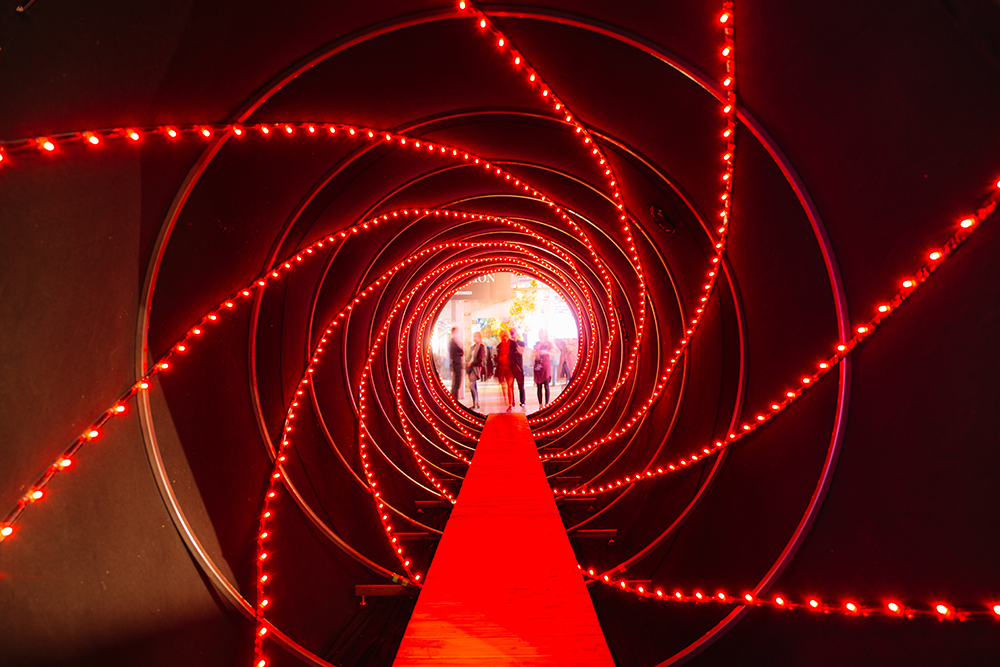

“Funplace” BERLIN PHOTO WEEK, 2019. Fotos: Kolja Eckert
So what kinds of new 35mm film cameras are still available?
Well, 99 percent of the analog 35mm camera market is for used models. Nikon stopped production of its last 35mm camera, the F6, just last year in 2020; Leica still has the M-A Series and the MP series, but they’re very expensive. It’s mainly a used camera market. I’m personally waiting for a classic film camera brand — maybe Pentax or Contax — to rise up from the grave and start making and offering new analog cameras in the next couple of years. As with music — the turntable and vinyl market — it could be very successful.
I think the focus on only the camera market is too narrow. More broadly speaking, we’ve never had so many people taking pictures in the world on a daily basis as we do now — if you include the billions of smartphones in the world, we have such a broad range of cameras in households, so we should double down on that as the main mission and message for photography in general. The selling of new cameras is a niche or professional market at the moment — around eight million down, but maybe it could grow to 15 million over the next three to five years since more people are using compact system cameras (CSC), but that’s it. And while there is this third market that’s interested in traditional photography, it’s not necessarily for the analog single-lens reflex (SLR) camera itself, but in the whole development process. People want to be more involved in the process rather than leave the final photograph to software or AI; they want more control so they can put their personality into the process. That’s the promise of analog photography, and that’s what analog photography provides.




Left “Die üble Nachrede”, 1932. Right: “Südliche Erinnerung”, 1957. Copyright Heinz Hajek-Halke und CHAUSSEE 36.
How will BPW incorporate this broader view of photography into its event lineup, exhibitions, and venues?
Well, on the one hand, we’re working with partners such as Skylum and Adobe, which create digital tools such as Luminar AI and PhotoShop. They’ll have displays with product demonstrations and stations so that people can see how the AI works to auto-edit images, or how they can work in tandem with these tools to, say, change the lighting in the sky or other effects.
We’re also partnering with AnalogueNow, which is a community of analog photography enthusiasts here in Berlin that will host some exhibitions, talks, and workshops for beginners looking to get into analog photography, as well as some advanced workshops around darkroom techniques. Another sponsor, FujiFilm Instax, will also have some displays aimed at younger people that show how one-sheet instant photography film works.
There will also be stations where attendees can rent the newest models and try them out in the field. So if you want to try a new Sony camera with a specific telephoto lens, this is your chance to do it. We’ll also have a large European dealer on-site, so you can buy any cameras, lenses, or accessories you like, or just talk to them if you have any questions about the technology or sensors and so on.
Then, in addition to the panel discussions and lectures I mentioned earlier, we’ll present some masters survey-like exhibitions of analog photography by, for example, Heinz Hajek-Halke, from the Bauhaus era, and legendary fashion photographer George Hoyningen-Huene, as well as some other exhibitions by young or big photographers working with film cameras. All of this aims to offer a few paths and perspectives on analog photography now, and its place in the broader photography space today, along with where it’s going. We think that over the next few years of the development of BPW, this picture will be more complete because we think it’s a general trend, and we will move this trend.
One of our themes is “No Limits,” which makes sense in a photographic context for an event that takes place in a city like Berlin that at one time had a borderline running right through the city. We’ll have an exhibition of photographs by Thomas Hoepker, a major West German photographer who worked for Stern magazine and Magnum Photos and took pictures in East Berlin during the ’60s and ’70s. These photos showed his impressions of that city from the perspective of a West German guy, something many people did not get to do in person. So we’re exploring the idea of “no limits” in this way, for example.
Can you tell us a little bit about the new venue?
Because the original venue, Arena Berlin, will continue to be used as a vaccination center by the Berlin government, BPW was moved to the Haubentaucher, which is part of the RAW cultural center in Friedrichshain-Kreuzberg and has exhibition spaces, restaurants, clubs, and a swimming pool. The setup will be similar, though, with the “Funplace” as the main BPW hub. It’ll have all the installations by camera and photography industry brands. These will include hands-on demo stations, lectures, workshops, and Instagram-friendly photo stations. Photo tours around Berlin will also be on offer.
Why is Berlin the right place for BPW?
Berlin’s a special city, but this could work in another city, as long as it has a cultural background with many different kinds of arts and culture — so it could work in New York, of course.
SUMMARY:
- Even though its partner Messe Berlin’s IFA Berlin 2021 was canceled, Berlin Photo Week will take place as scheduled from August 26-29, 2021, at the Haubentaucher in Berlin.
- The event is as focused on the current resurgence of interest in analog photography as it is in taking better pictures with smartphones.
- Major photography brands such as Nikon, Leica, and Fujifilm Instax will share billing with workshops, lectures, and exhibitions by top photographers and industry professionals.
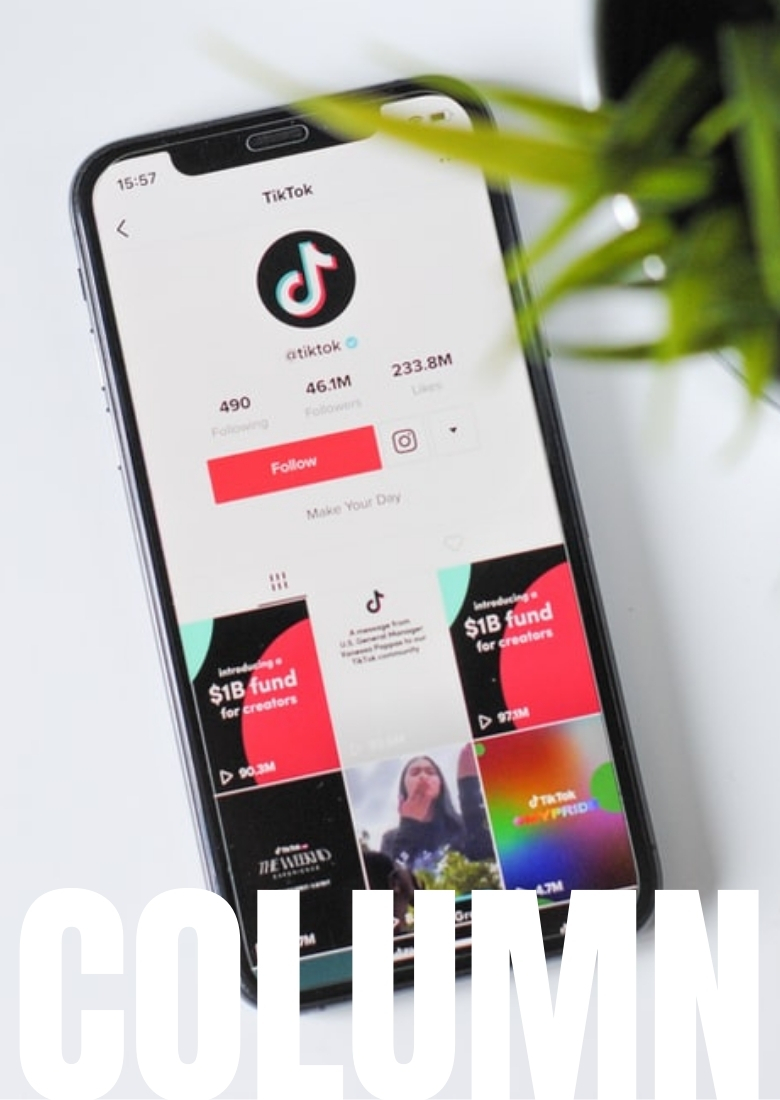

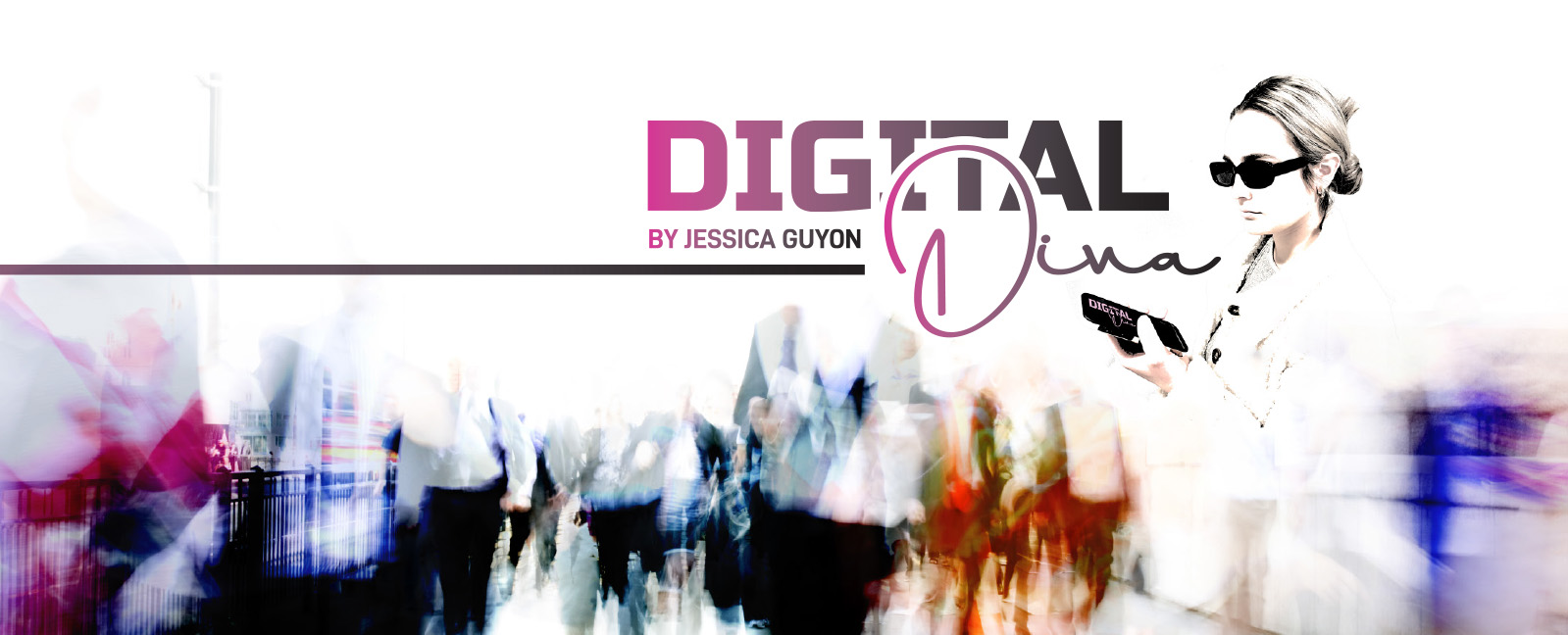

Why Winning on TikTok
Means Business
Nearly half of TikTok’s user base is making purchases after seeing products advertised on the platform.
Despite the lack of any hard evidence to back up his claims of TikTok as a “national security threat,” Donald Trump had seemingly set his sights on taking down the wildly popular looping video social media network as one of his last orders of business as president. Luckily, the former president struck a deal that kept the app alive (and somewhat under U.S. control), enabling brands to still reap the benefits that TikTok has to offer.
Perhaps the most eye-opening statistic from Adweek revealed that 49 percent of TikTok users have made a purchase after seeing a product appear on the platform. Comparatively, the survey found that 41 percent of adults reported purchasing something after seeing it on Facebook. That eight percent upper hand doesn’t seem like a big deal on its own, but when you consider just how much longer Facebook has been around compared to TikTok, which was founded in 2016, it is impressive.
What’s even more interesting about the purchasing power TikTok holds is that the videos on there gaining the most traction for brands aren’t always credited to paid influencers. Some users who take to the platform are regular customers eager to share their positive experiences.
It’s not uncommon to come across a video that begins with “this video is not sponsored,” followed by a one-minute-or-less monologue praising a product or service. Of course, there are plenty of videos that are paid for, but even those tend to lean towards the more authentic side.
“The pandemic has made consumers sharper,” said Ali Fazal, vice president of marketing at GRIN. “People want to feel a genuine connection on TikTok and they want to see real content.”
Fazal says content creation on the viral video app isn’t reserved for influencers. Brands can and should be content creators, too. But it’s important to keep in mind the demographics that are most active on the platform — namely, Gen Z and Millennials.
“You need to go to where your audience is and build deep trust in those channels as a brand,” GRIN CEO Brandon Brown said on the RETHINK Retail podcast. “When you’re trusted and top of mind by the consumer, your sales and marketing investments are more performant across the whole mix, not just organic social or paid social.”
Because the most effective videos are the authentic ones, that also means a low cost to produce, in most cases. Highly commercialized advertisements certainly have a time and a place, but TikTok is not one of those places.


FEATURE
Dealerscope’s 40 Under 40 Honorees: The Class of 2021
Dealerscope’s 40 Under 40 Honorees: The Class of 2021
COMPILED BY NANCY KLOSEK
Never in the history of the consumer technology industry has the dynamism and energy of its members counted more than in the past year and a half, when all the usual challenges of business were compounded by the COVID pandemic.
Luckily, the industry is emerging in good health from these challenges — thanks in no small part to the contributions to its well-being from the roster of honorees in Dealerscope’s 2021 40 Under 40 awards.
The individuals recognized this year were nominated by votes and supporting testimonials from their industry peers both within and outside their companies. The nominations were then reviewed by Dealerscope’s staff, and our honorees were selected. They were then asked to answer several profile questions to help our readers get to know them a bit better.
We’re pleased to present their career histories and their remarks here, which include insights both about their individual roles at their jobs and about their views on the overall state of the tech industry and the directions in which it is headed.—Compiled by Dealerscope Editors


Waqas Ahmed


Adeel Tufail


Alex Wiggins


Andreas Hansen


Andrew Terry


Bianca Da Silva


Carly Li


Cory Combs


Dave Weiss


Eric Hunter


Giles Sutton
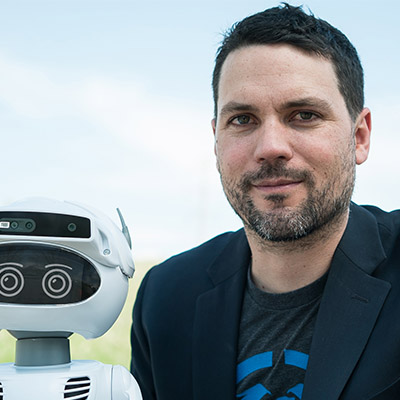

Ian Bernstein


James DiPaolo


Jashua Samimrad


Jeff Naidu


Joe Feregrino


Jonathan Kyle
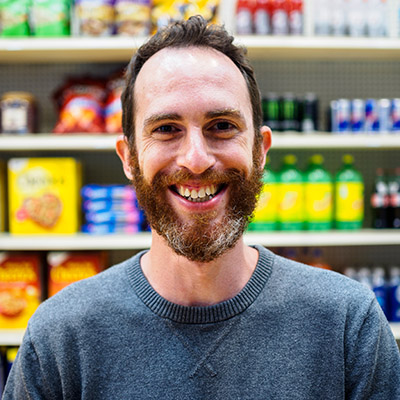

Jordan Fisher
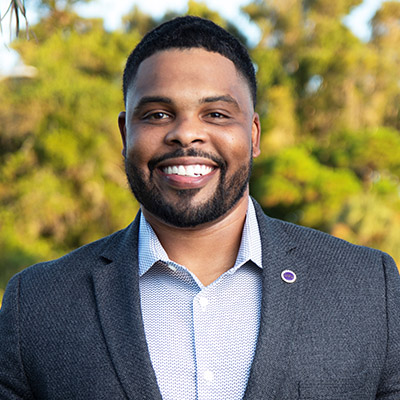

Justin Miller


Kelly Powers


Laura Dake


Lee Ann Mangels


Lindsay Lubeskie


Luisa Standley


Lynne Jaeger


Michael Buratto


Michael Libman


Michael Sherman


Myles Broadhead


Nick Nanez


Nicole Murakami


Nicole Riddle


Nim Sharon


Rob Stott


Romain Lacombe


Sahand Dilmaghani


Seana Sullivan


Steve Mahler


Terra Teat


Grant Hancock
APPLIANCES
Cool Gadgets and Appliances to Beat Summer Heat
Everything from portable fans to powered coolers is getting smarter.
BY STEPHANIE ADAMOW
Summer has arrived. As temperatures rise, consumers will search for the best ways to beat the heat, be it at home or on the go. Multiple factors are contributing to the growth in particular categories of cooling devices, including the demand for energy-efficient technology, the effects of global warming/climate change, and the popularity of portable devices.
It is reported that the personal cooling device market is expected to experience a Compound Annual Growth Rate (CAGR) of 5.16 percent, during the forecast period of 2021 to 2026. Energy efficiency and portability make these cooling devices, particularly handheld models, most attractive.
The rise of temperatures created by global warming also is a contributing factor to the appeal of personal cooling devices. This past May, the World Health Organization (WHO) launched a #KeepCool campaign to educate the population on the dangers of heat and “adapt for the increased temperatures in the future.”
The organization reported that 2020 was the third-warmest year on record globally; that 2011–21 was the warmest decade; and that the annual global temperature forecast for 2021 suggests that this year will also enter a series of the Earth’s hottest years. As a result, there is an expected increase in the use of “user-friendly and energy-saving cooling devices,” per a report by market research firm Mordor Intelligence.
According to that same report, the Global Personal Cooling Device Market size, which includes handheld cooling devices, personal air conditioners, and desk fans, was estimated at $664 million in 2020 and expected to reach $683 million in 2021, at a CAGR of 3.22 percent from 2020 to 2026 to reach $803 million by 2026.
Personal cooling devices have been extensively adopted in the Asia–Pacific region due to the area’s hot climate and industrial growth. According to recent research published on BusinessWire, “the rising per capita income and rapid urbanization” in the emerging nations of the Asia–Pacific region, such as China, India, Indonesia and others, are further expected to drive the portable fans market demand.
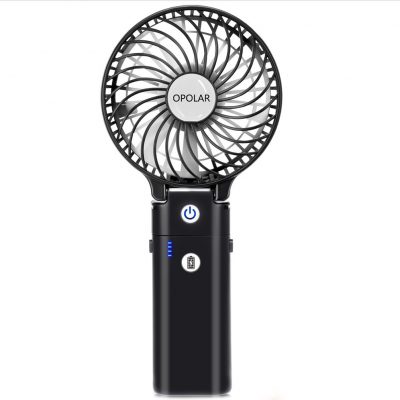

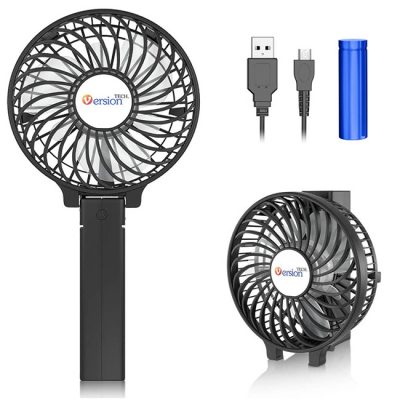

Personal fan favorites
There is a multitude of options in this large market. Most personal fans can be held, clipped or positioned on a table/desk. The OPOLAR foldable fan comes with a 5200mAh battery pack, works for five to 20 hours per full charge, and yields 500 charge-discharge cycles. Listed as one of the company’s best-selling products, the four-inch palm-sized mini handheld fan has a foldable design, a metal clip, and can also be charged via a USB port.
Powered by USB and rechargeable battery, VersionTech’s portable fan is an “Amazon’s Choice” in this category The six-piece fan blades provide three speeds of low/medium/high, creating wind distance up to 3 meters (around 10 feet). The fan can be handheld, set on the table, hung on a sun umbrella, or clipped to other objects. The handle turns into a base when folded 180 degrees, making it a great desktop or night-table fan.
For an extra refresh from the heat, the O2Cool elite misting fan provides a cool mist with an ergonomic trigger. This battery-powered fan has a manual misting function, which provides up to 1,000 sprays per fill. A secure, screw-on bottom cap is easily removed to add water and ice.


Getting smart about being cool.
Handheld fans are portable and inexpensive to use while on the go or at work, but if your preferred method to stay cool is sheltering indoors, you are likely cranking the air conditioner. With energy conservation top of mind, the Sensibo Sky transforms any existing room air conditioner into a smart sensing system. At the most basic level, the soap-bar-sized device gives users a way to control the functions of their air conditioners from anywhere via a smartphone app, but it also has built-in sensors that help inform the smart management of said air conditioners. The system also includes advanced functions such as Climate React, which automatically changes the temperature and other settings of your AC depending on the Sensibo Sky sensor’s temperature and humidity readings, and Geofencing, which turns the AC on before you arrive and after you leave. Pluses include: advanced scheduling; voice-assistant integration; alerts about energy usage, weather and pollution; and an AC system health check feature.


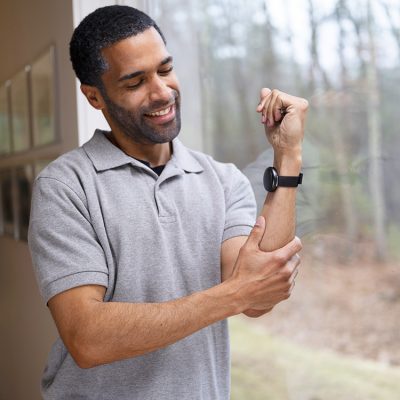

Body work
Looking to take your body temperature regulation to the next level? The Embr Wave 2 wristband features patented technology designed to harnesses your body’s natural response, using temperature to create balance and alleviate thermal discomfort. The intelligent wristband balances the nervous system using temperature to give you control over how your body feels. A predecessor to the original product released in 2017, the Wave 2 deploys cooling or warming sensations — or “waveforms” — to the temperature-sensitive skin on the inside of your wrist. This is all detected by nerve endings, or thermoreceptors.
“While the Wave harnesses thermal wellness, it does not alter core body temperature, but rather, impacts ‘perceived’ temperature,” says Sam Shames, co-founder and COO of Embr Labs. “Broadly speaking, the populations using the Wave are what we call ‘the thermally underserved.’ We have customers using the Wave to help with everything from menopausal and cancer-treatment-induced hot flashes to sleep disturbances and stress.” Shames notes that about a quarter of Embr owners use the Wave “recreationally” to feel more comfortable in hot or cold environments, “or because they just run chronically cold or warm.” The device can be controlled via an app or with a press of a button to personalize thermal wellness.


The Mobile Kitchen Appliance for Adventurers
Staying hydrated is paramount on hot summer days. For those beach days or road trips, you will be covered with the Dometic CFX3 Powered Cooler. The cooler, which is designed for rugged outdoor use with its ExoFrame construction, can be used in any setting to keep food and drinks frosty. The CFX3 mobile app lets users control Dometic CFX3 via a smartphone. Once your CFX3 is connected, you can set temperature and get a detailed history of energy and temperatures. Its VMSO3 variable-speed compressor features optimized software for better cooling, freezing, and power consumption. Additional features include spring-loaded aluminum handles and a high-resolution color display screen. The CFX3 comes in three models (35, 45, 55IM), all with cooling temps that range from -7°F to +50°F. Pictured is the largest model, which measures 28.35 in. D x 17.91 in. H x 18.90 in. W.
It does need to be powered, though, but is designed to work with any car power outlet or portable power station. We tried it out on a recent trip to Death Valley and were impressed not only by its ability to keep everything from drinks to cold cuts cool for at least half a day in temperatures hovering around 100 degrees, but also by its ability to quickly cool down to desired refrigeration or freezing temperatures in just a few minutes.
“The CFX3 Series powered cooler was extremely well-received when we launched it in 2020; people realized right away that it’s a product that allows you to take all of your favorite food and drinks with you wherever you go,” says Larry Jarriel, community manager and content coordinator, Dometic, “but its popularity has grown even more throughout the pandemic as people new to the outdoors sought to get outside and explore more, without leaving the comforts of home behind.”
Whether your customers are looking to stay in or head out — or spend a little or a lot — they will have plenty of cooling options to pore over this summer.
Summary
- Energy efficiency and portability drive the growth rate of personal cooling devices.
- Rise in temperatures globally due to climate change drives efforts to keep cool.
- Portable fans are trending, especially in the Asian market.
BACK-TO-SCHOOL TRENDS
A Return to Back-to-School Trends?
Kids are heading back to school en-masse, but the continued chip shortage may mean that their shiny new laptops will have to wait.
BY JOHN R. QUAIN


It’s probably not hyperbole to state that Fall 2021 will be the most unpredictable back-to-school season retailers have ever faced. As we lurch back to normal from a year of almost exclusive remote learning, most parents (and kids) are expecting to see students return to the classroom. But there is still some understandable hesitation to a full return, and how that will play out in terms of retail trends remains in question. Will families look for traditional back-to-school tech, or plan for more homeschooling?
A recent survey of parents in Massachusetts, for example, found that almost 70 percent want their children to go back to in-person schooling this fall — while about 28 percent still want a hybrid or fully remote learning option. Either way, analysts and tech companies say some of the technologies adopted during the pandemic are here to stay.
“Of course, the laptop is the centerpiece of coursework,” notes Ross Rubin, principal analyst at Reticle Research. So he believes that demand will remain high. Particularly popular for taking handwritten notes and scribbling diagrams and equations will likely be 2-in-1 Windows laptops and iPads with Magic Keyboards, which are light enough for a grade-schooler’s backpack and can last up to a full day on a single charge. Also likely to be popular this year are Chromebooks.
“Our Chromebook volume grew like a million percent” last year, said Jeff Witt, manager at Lenovo Communications, exaggerating to make a point. “A lot of school systems have standardized on Google, so it can be a requirement to use Chrome.”
The other trend that he expects to continue from the pandemic year is the one toward larger laptop screens. “The screens are tending to be larger because portability is not as big a concern,” said Witt. As for pricing, Lenovo sees the sweet spot for back-to-school models in the $800 to $1,000 price range.
Alternately, display maker Viewsonic sees an increase in portable or second-screen sales. A 15.6-inch screen that plugs into a USB-C port as a second screen and costs under $200 is a great way for students to expand their display space. It also enhances productivity when using reference materials, said Reticle Research’s Rubin.


Going For Wi-Fi 6
Another lesson of the difficult year during the global pandemic has been that connectivity is king. And students will be taking that lesson with them back to campus.
“Colleges usually have excellent Wi-Fi coverage, but look for a device that can support Wi-Fi 6 for the best coverage, as campuses upgrade their equipment,” said Rubin. More routers, such as Netgear’s $599.99 Nighthawk RAXE500 router and devices like Samsung’s S21 Ultra 5G (starting at $499.99) are jumping on the Wi-Fi 6e standard.
Going back to school may also encourage more 5G adoption. Verizon is pitching more fixed wireless solutions to customers, including 5G in cities and LTE in rural areas. “Peak times will be more normal” as people return to offices, said Steve Van Dinter, director of communications at Verizon, with peak usage in the evenings. He also thinks there will continue to be high demand for more bandwidth, following the pandemic. “They have a bigger appetite for using technology now,” Van Dinter said.
More, More, More
“We’re pretty confident we’re going to see high demand going back to school,” concurred Ray Hedrick, a product manager at Viewsonic. “So we’ve moved away from the hybrid messaging we did before.”
Indeed, the signs are increasingly pointing to a return to in-person classes. The largest school district in the country, New York City, has eliminated remote options for the coming school year. New Jersey’s governor said his state is going the same way: no remote learning this fall. Meanwhile, state boards of education such as the one in Illinois are voting for in-class lessons, as well. And all of them will have more money to spend this year.
While relief payments for families may have been expended, states will have a new infusion of cash. The Federal government is handing out a record $122 billion in additional COVID-19 school recovery money. Some states will doubtless put those funds toward additional technology.
Combine this with back-to-work corporate moves, and it will put additional pressure on demand for computers, peripherals, and displays. “The transition back to work means companies are changing out old hardware,” said Viewsonic’s Hedrick. Couple that with the continuing chip shortage, and you can expect some customer frustration. “It is still really hard to get products,” he added.
Indeed, the gating factor for many CE companies and retailers this back-to-school season may remain the global microprocessor and chip shortage. “Last year, we sold everything we could make,” noted Lenovo’s Witt. But he anticipates the next 12 months will be easier. “It will be better,” he said, “but specific displays or processors may still be in short supply.”
SUMMARY:
- Even though more students are heading back to school, portability is less important after the pandemic’s stay-at-home schooling, so larger laptop screen sizes may be more popular.
- With 5G networks growing around the country, particularly in cities, new broadband options will arise at home and in smartphones. At the same time, Wi-Fi 6 routers will be of interest given the increase in Wi-Fi 6-compatible devices.
- The Federal government is handing out a record $122 billion in additional COVID-19 school recovery money. Some states will doubtless put those funds toward additional technology.


BACK-TO-SCHOOL TRENDS
Leaders of the New School
Our picks for the best new student-friendly electronics.
BY JOHN R. QUAIN


Lenovo IdeaPad Flex 5i Chromebook
A 2-in-1 notebook with a 360-degree hinge, this under-3-pound Chromebook is ideal for students looking for all-day battery life and flexibility. Price TBA.
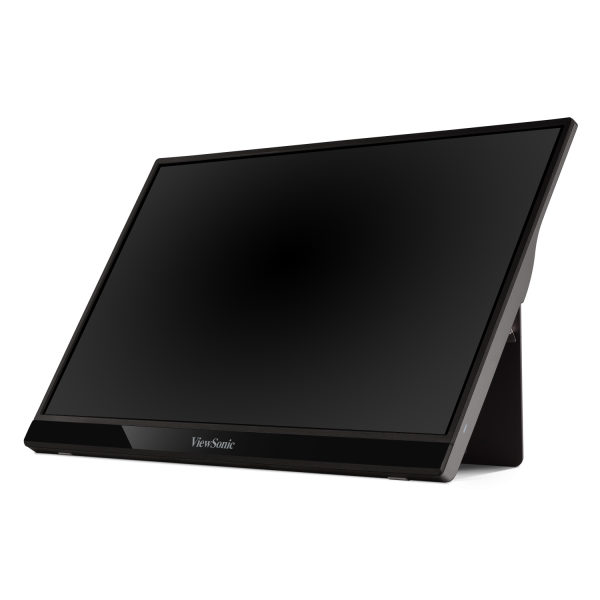

Viewsonic VG1655
A portable 15.6-inch monitor that plugs into a USB-C port, it’s intended to operate as a second screen for a laptop or tablet and promises to boost productivity. $255.99
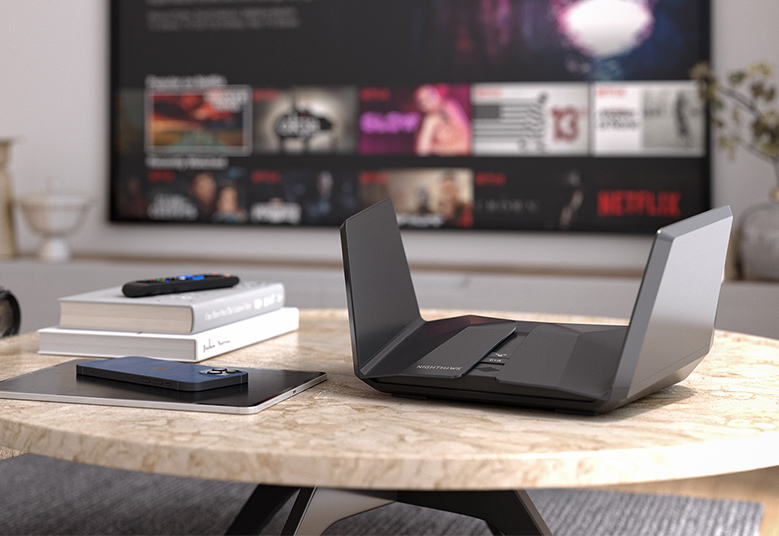

Netgear Nighthawk AXE11000 Wi-Fi Router (RAXE500)
The latest and fastest in home networking performance, this Wi-Fi 6E router delivers up to 10.8Gbps of throughput for smooth streaming and can handle up to 60 devices. $599.99
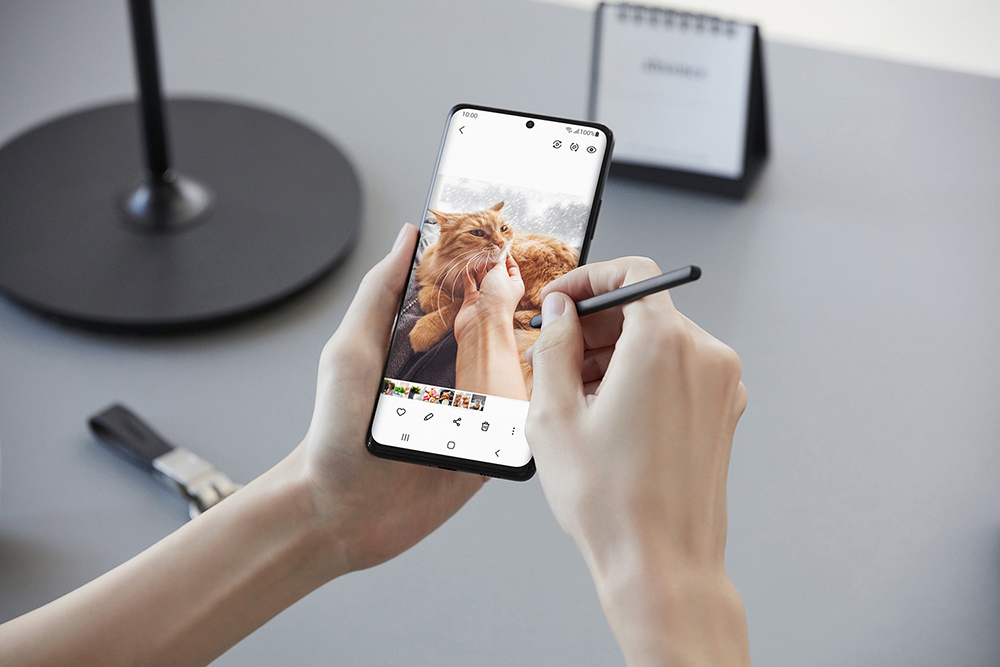

Samsung S21 Ultra 5G
More devices like the affordable Samsung S21 are supporting the faster Wi-Fi 6E networking standard. Starting at $499.99.
Link: https://www.samsung.com/us/smartphones/galaxy-s21-ultra-5g/
Verizon 5G Internet Gateway
Paying too much for broadband, especially of the gigabit variety? As of June, Verizon has expanded its blazingly fast gigabit millimeter-wave 5G service to more than 40 cities in the U.S.. This striking all-white gateway—and a compatible address—are all you need to tap into Verizon’s 5G Ultra Wideband unlimited, no-cap data plans, which are $50 per month for existing Verizon subscribers and $70 for everyone else, but you can get up to $500 in credit to offset termination fees from your existing Internet provider (and, if you’re a new subscriber, you can get a free Samsung Chromebook). Link:
SUMMARY:
- Even though more students are heading back to school, portability is less important after the pandemic’s stay-at-home schooling, so larger laptop screen sizes may be more popular.
- With 5G networks growing around the country, particularly in cities, new broadband options will arise at home and in smartphones. At the same time, Wi-Fi 6 routers will be of interest given the increase in Wi-Fi 6-compatible devices.
- The Federal government is handing out a record $122 billion in additional COVID-19 school recovery money. Some states will doubtless put those funds toward additional technology.
STAT SHOT
CE Industry By Numbers
$1.2...
…billion is the amount of money Best Buy has pledged to spend on Black, Indigenous, and people of color (BIPOC) businesses. The big-box CE retailer also said it would set aside $10 million of its annual advertising spend on LGBTQ+ and BIPOC media outlets, as well as make sure that at least 30 percent of the casting in its advertising would feature similar diversity. “We better serve our customers, employees, and communities when there are more diverse voices at the table, businesses we work with, and stories being told,” said Best Buy CEO Corie Barry.


1927…
…is the year that the TK Tower Theatre in downtown Los Angeles was built. Closed since 1988, the ornate Baroque Revival, S. Charles Lee-designed venue just reopened as Apple Tower Theatre, the company’s 26th retail location in the Greater Los Angeles area. As one of the first movie theaters to provide sound for “talkies,” the theater had technology in its very foundation. London-based Foster + Partners worked on the renovation, which includes seismic retrofitting, refurbished bronze, a washed terra cotta exterior, and a restored clock tower. In addition to an Apple Store, the building will house Apple’s first Today at Creativity Studio, a new initiative to provide access to technology, equipment, mentors, and other resources for creatives.
https://www.apple.com/newsroom/2021/06/apple-tower-theatre-now-open-in-downtown-los-angeles/


30...
…million Dell PCs are at risk due to a series of security holes in the computer manufacturer’s SupportAssist program, which ships with every one of its PCs. According to researchers at security firm Eclypsium, the specific vulnerabilities were discovered in the BIOSConnect tool, which powers remote firmware updates and operating system (OS) recovery features. Dell is providing BIOS/UEFI updates to owners of the 129 different desktop and laptop models that are affected.


50...
…retail properties will be unloaded by Seritage Growth Properties, the real estate investment trust that owns the remaining 27 or so Sears stores left in the United States. The company has 154 retail sites in total and plans to sell a third of them to raise cash for its remaining properties.


37%...
… is the market share that Amazon had in 2020 among the aggregate online sales of the top five retailers in the Dealerscope Top 101 Retailers list. No surprise, considering Amazon’s roots are in e-commerce. The other companies in the top five included Apple (29 percent), Best Buy (21 percent), Walmart (12 percent), and HP (12 percent). (Source: 101 data)


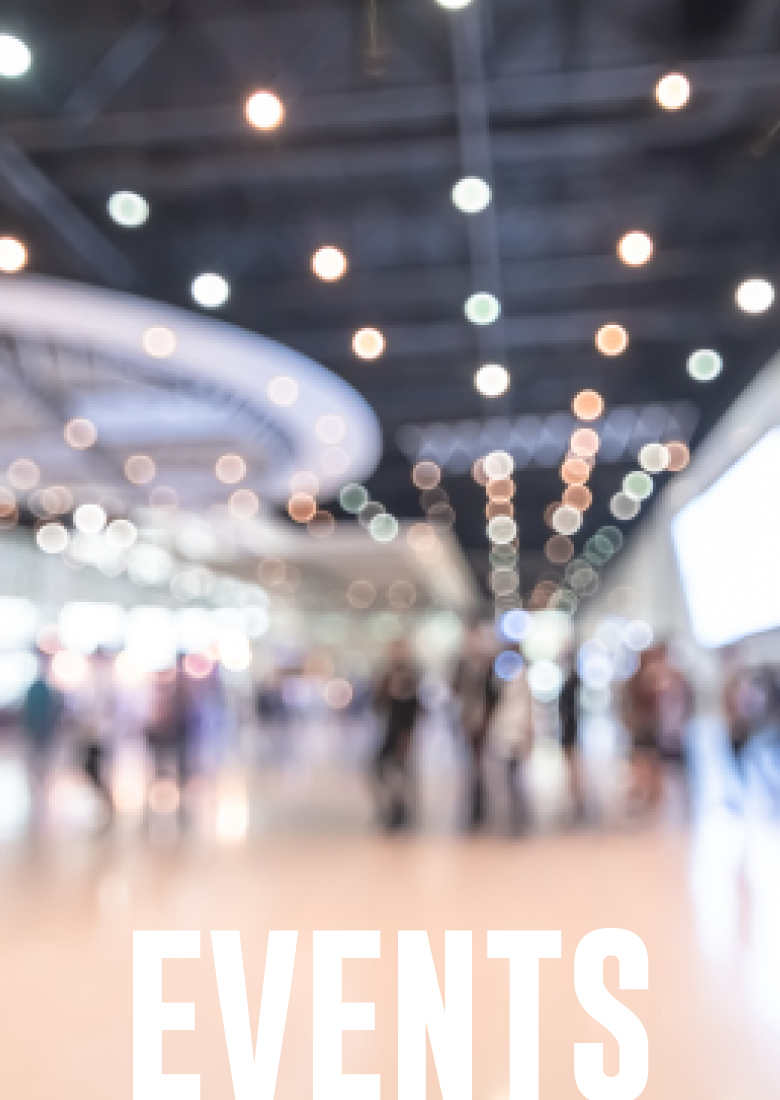

CONSUMER TECHNOLOGY CALENDAR
Upcoming Events
Mobile World Congress:
June 28-July 1, 2021
Parks Associates CONNECTIONS: MDUs: Scaling Up:
July 14, 2021
http://www.parksassociates.com/events/connections-us
AV/IT Summit Virtual:
August 5, 2021
Nationwide PrimeTime:
August 15-18, 2021
https://www.nationwideprimetime.com/
Parks Associates CONNECTIONS: State of Home Security Market:
August 18, 2021
DEALERSCOPE PODCAST
Welcome to the Dealerscope Podcast – Your Source for all B2B trends in Retail, Tech and Biz!
In the high-strung consumer electronics retail business, it can be hard to take a moment to step back and breathe. The Dealerscope Podcast gives CE retail leaders the chance to kick back, relax, and talk shop in a casual setting.
Refresh Your Subscription!
Get Dealerscope and Connected Design delivered to your doorstep or to your email.
How, where and when we work has changed dramatically. We realize that these changes in your work habits may have impacted how you receive your issues.
Click on the links below to update how and where you receive your issues! Change your mailing address or request a change from print to digital, or just head to our websites.
PA OFFICE:
230 South Broad Street, 17th floor
Philadelphia, PA 19102
NY OFFICE:
31 Hudson Yards, New York, NY 10001
E-Mail: dealerscope@ctlab.media


EDITORIAL
EDITOR IN CHIEF
Tom Samiljan
tsamiljan@ctlab.media
SENIOR MANAGING EDITOR
Stephanie Adamow
sadamow@ctlab.media
CHIEF EDITOR DIGITAL CT LAB
Jessica Guyon
(267) 266-1432
jguyon@ctlab.media
CONTRIBUTORS
Samson Amore
Scott Hagen
Nancy Klosek
Bhrugu Pange
John R. Quain
CREATIVE
Astrid von Krenski
(940) 727 8595
avkrenski@ctlab.media
EDITORIAL OFFICES
230 South Broad Street, 17th Floor
Philadelphia, PA 19102
www.dealerscope.com
CHIEF OPERATING OFFICER
Alice Schmalzl
(940) 612-9581
aschmalzl@ctlab.media
GROUP PUBLISHER
Tony Monteleone
(718) 216-2046
tmonteleone@ctlab.media
SOCIAL MEDIA & VIDEO
Alexander Oswald
aoswald@ctlab.media
OPERATIONS MANAGER
Vicki Manucci
vmanucci@ctlab.media
CIRCULATION & DISTRIBUTION
Carrianne Ramsey
cramsey@ctlab.media
Reprints
Contact Publisher
List Rental, Postal/E-mail
Contact Publisher
Publisher of Dealerscope, and Connected Design
Copyright ©2021 CT Lab Global Media LLC
CT Lab Global Media is a diversified publisher of business and professional magazines. This publication is provided with the express understanding and agreement that the information and data within it will be solely for internal use and will not be used for the creation or updating of mailing lists for sale or distribution to third parties. Printed in the U.S.A.



